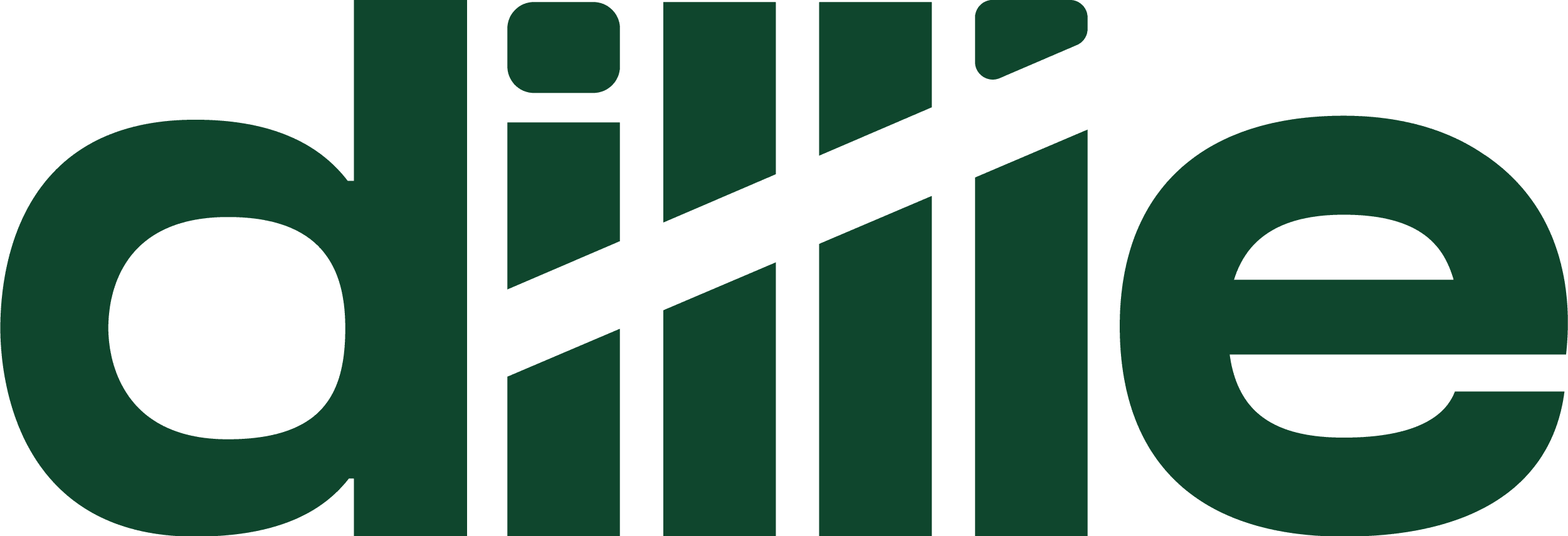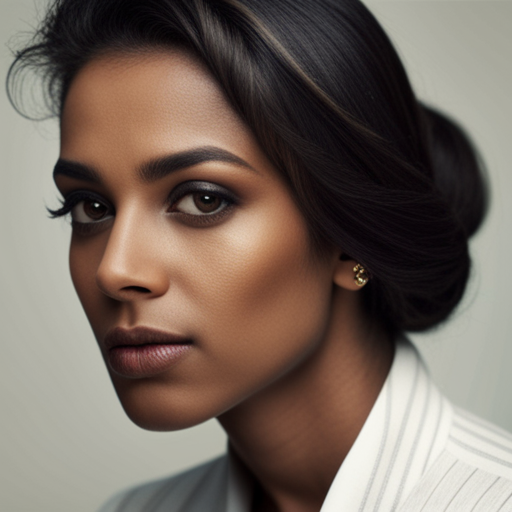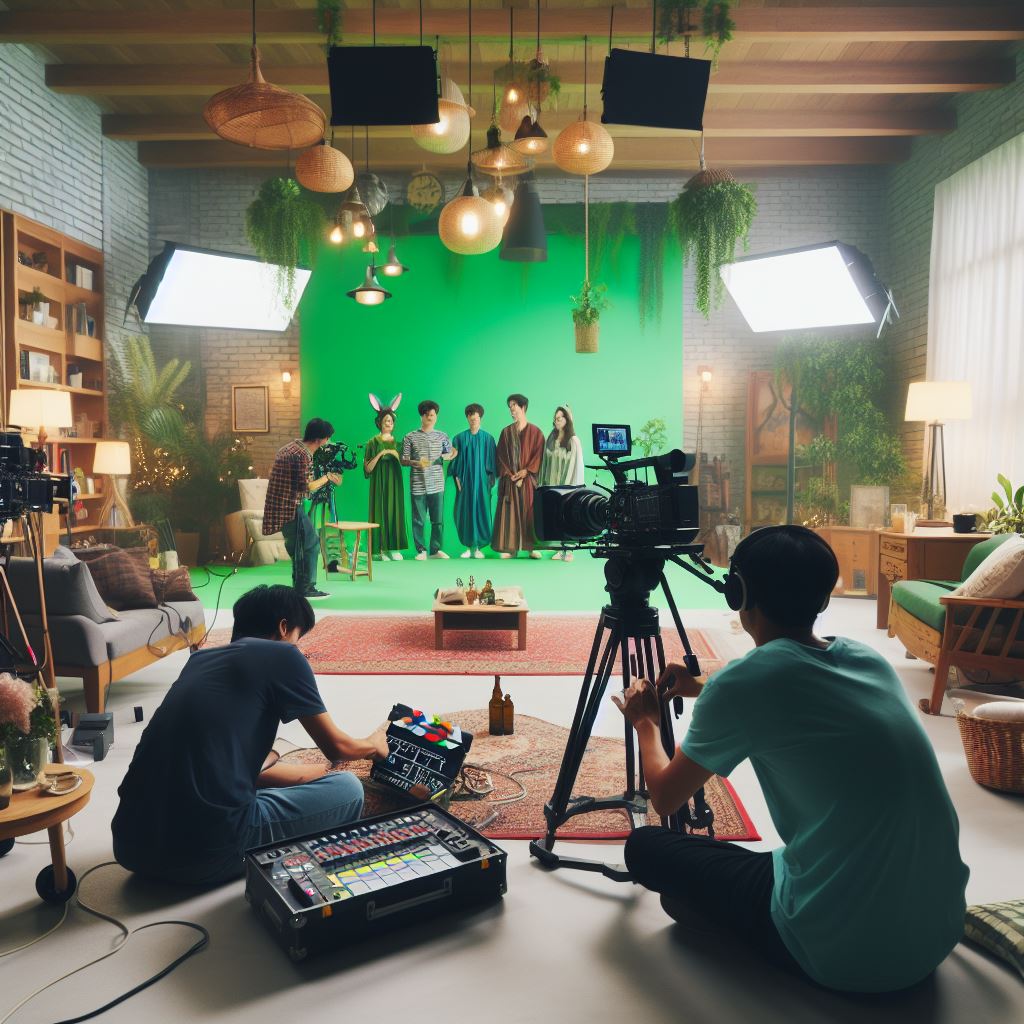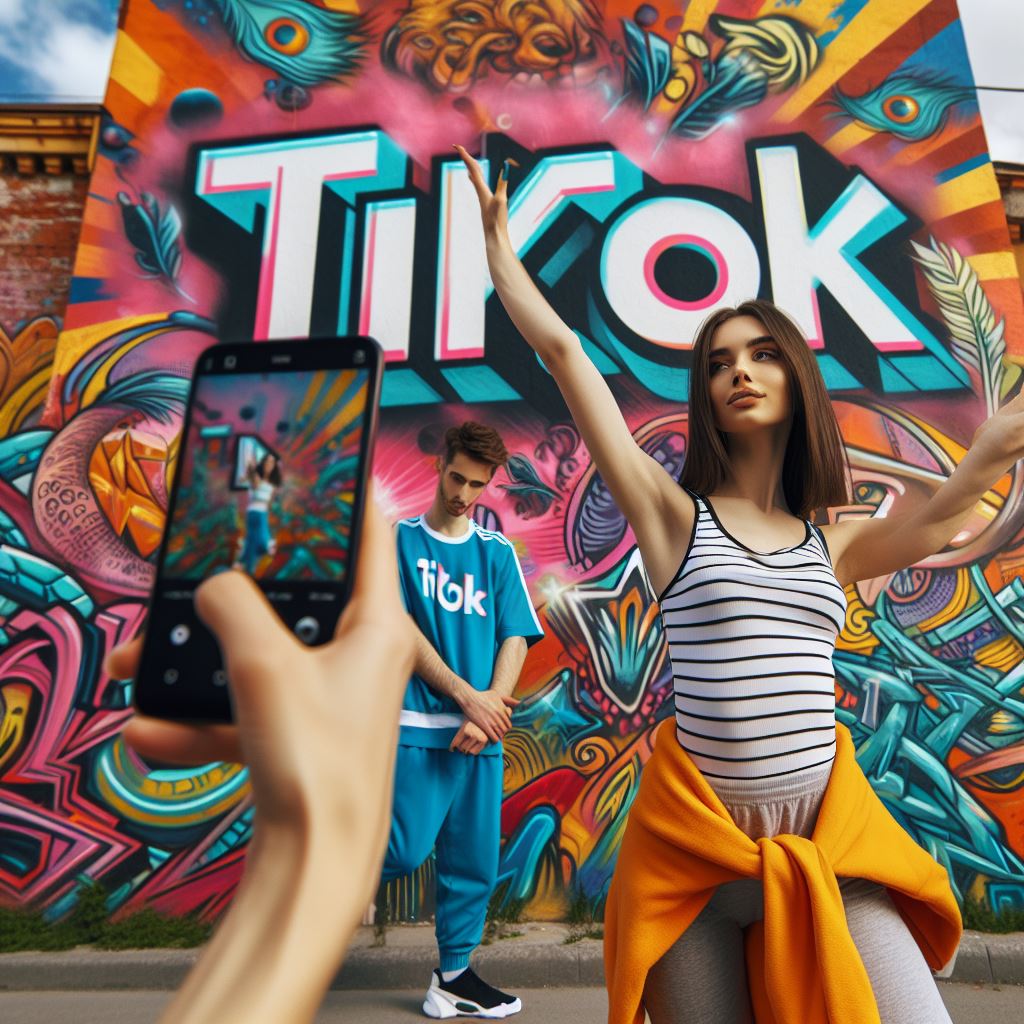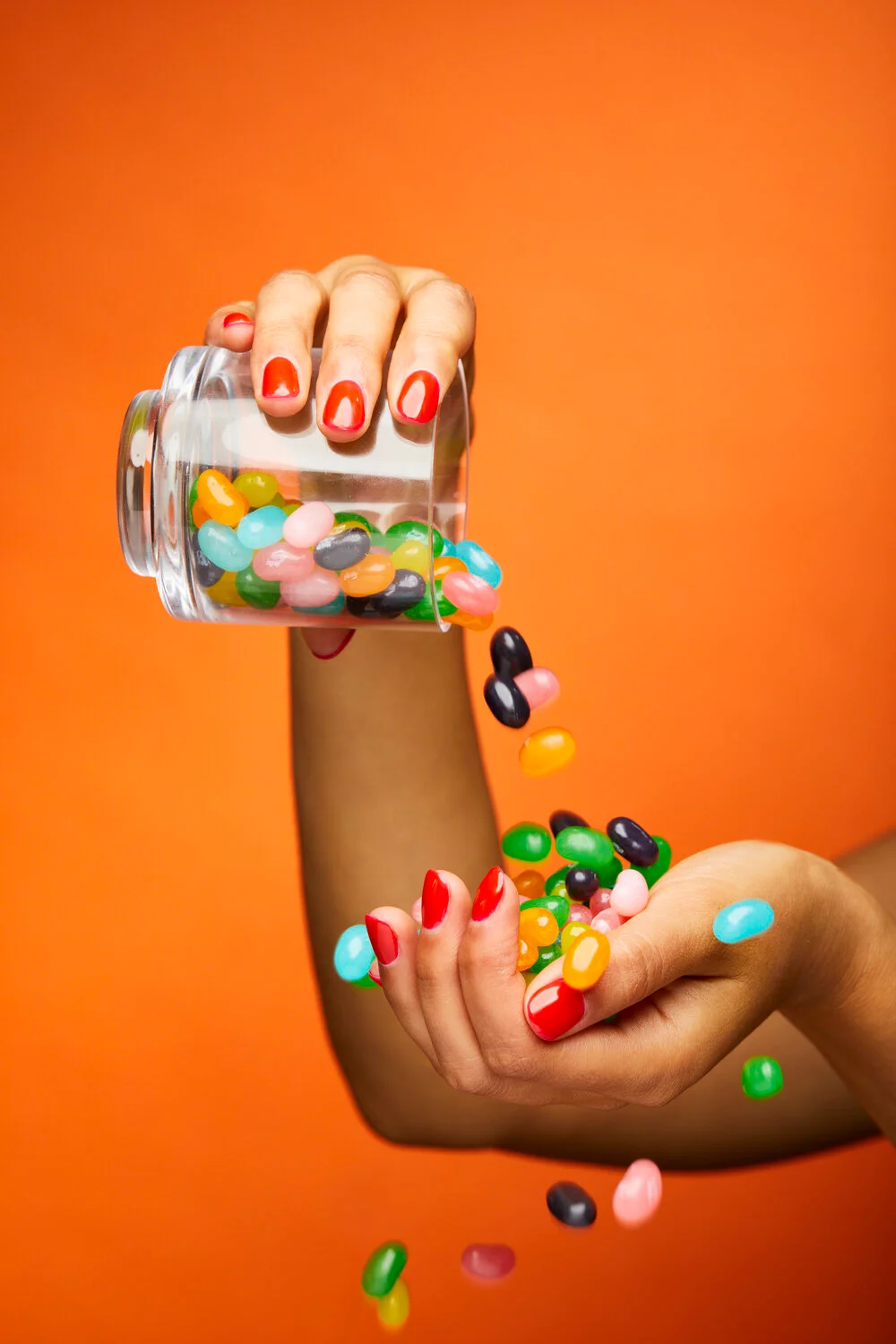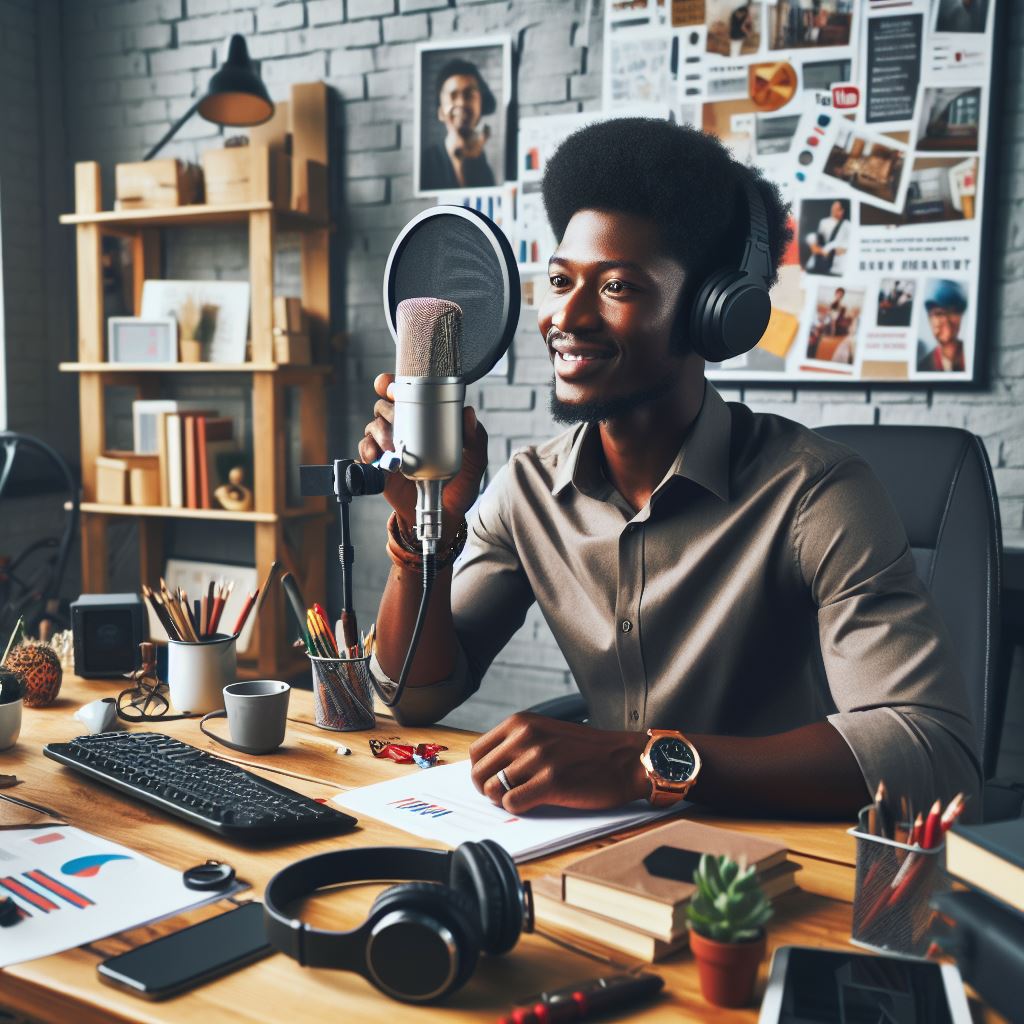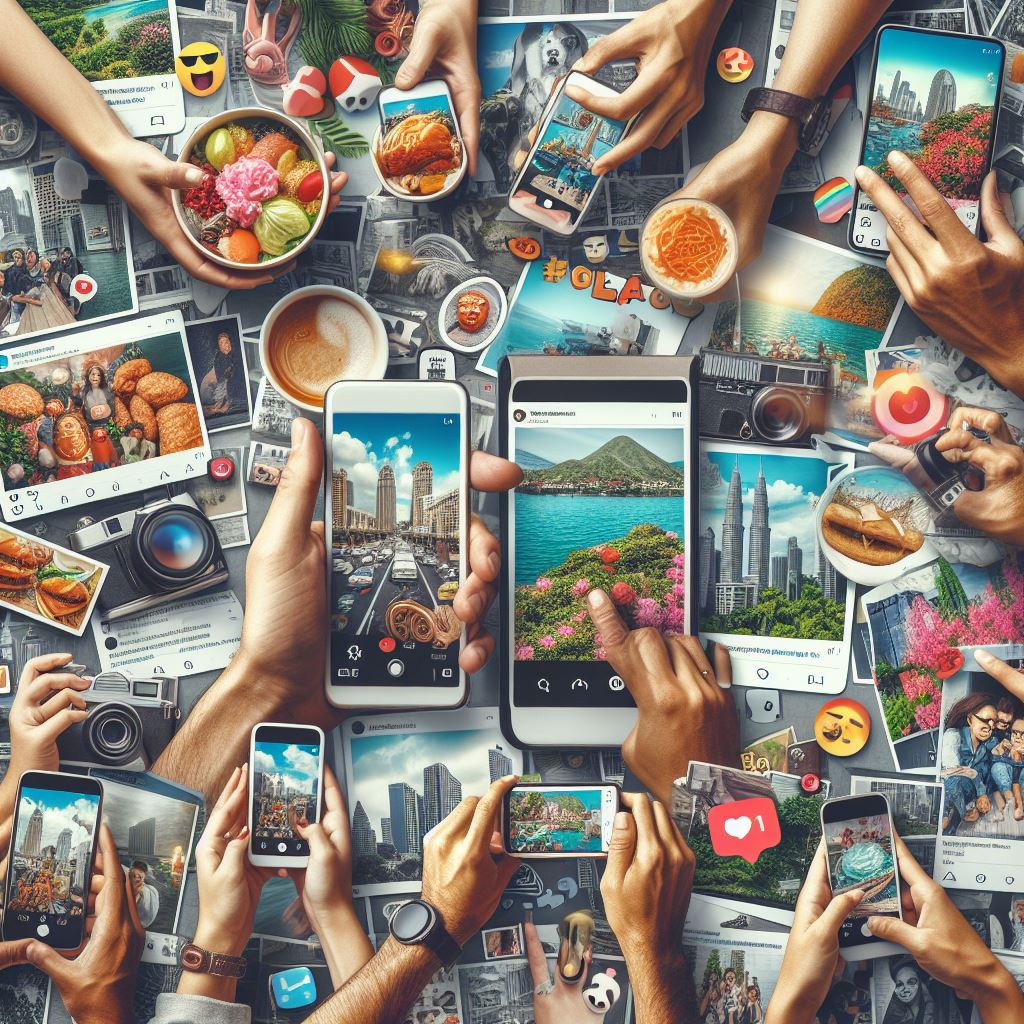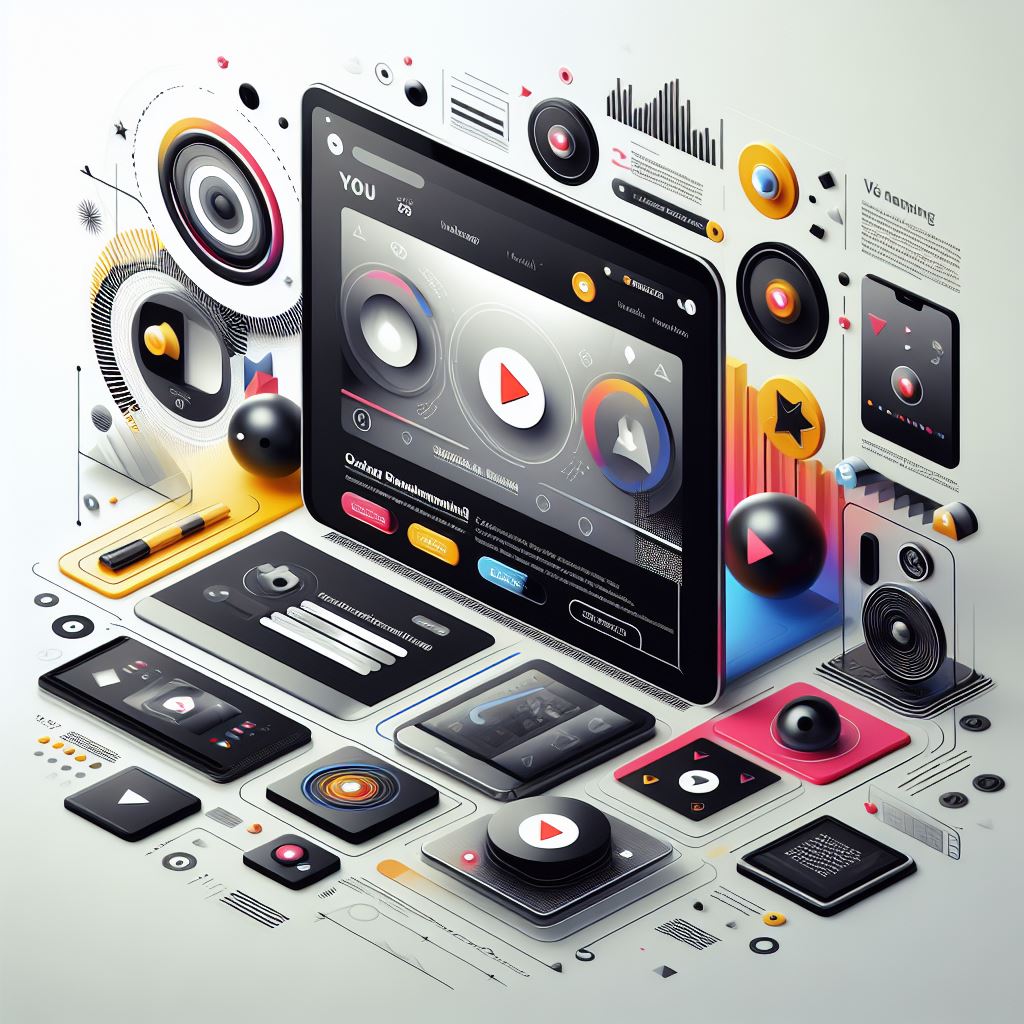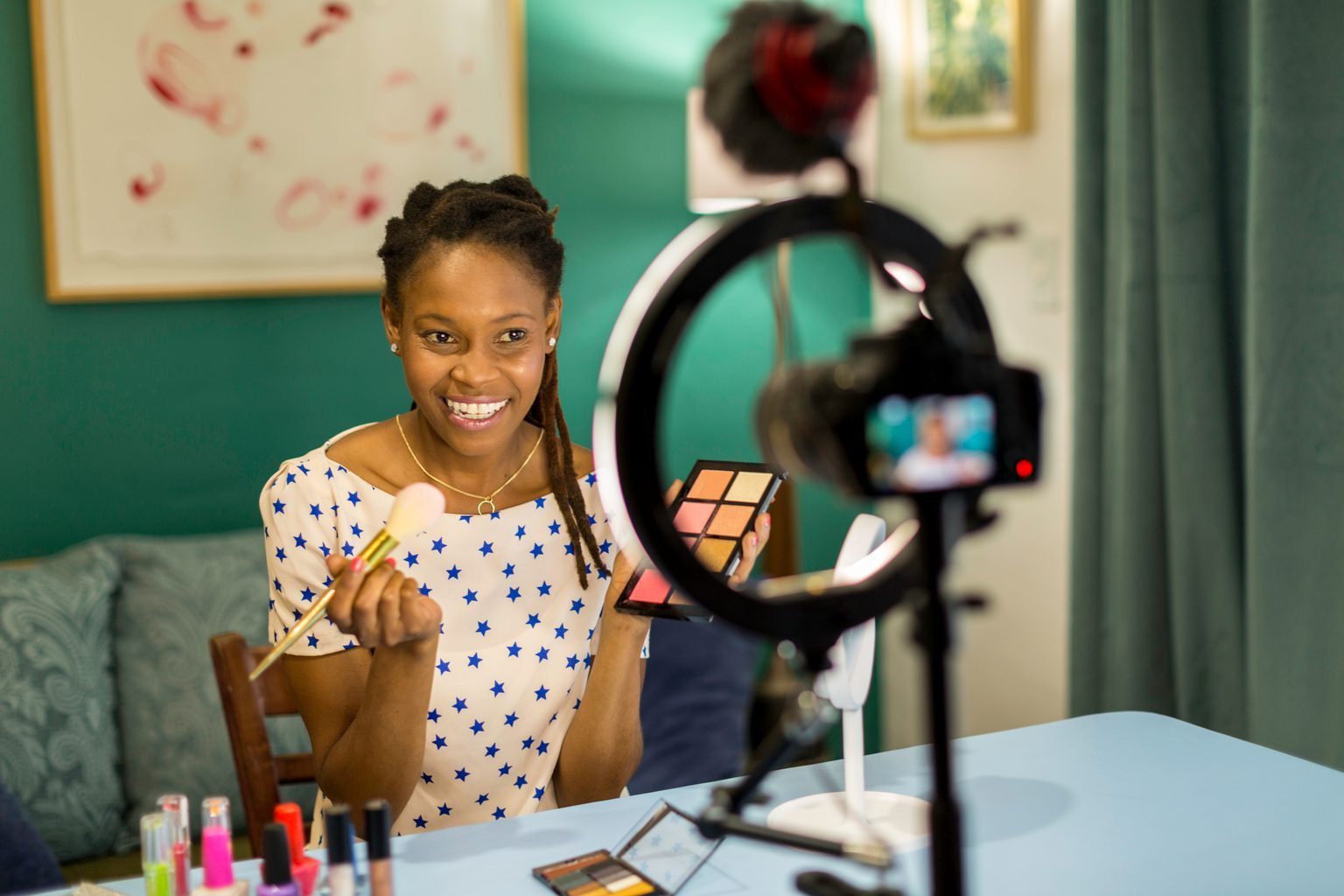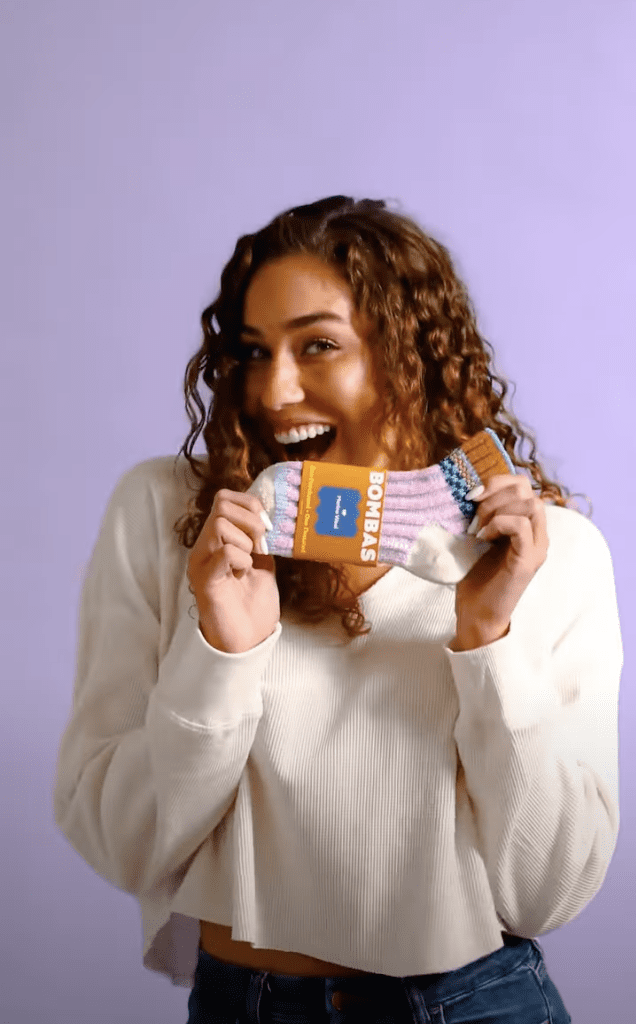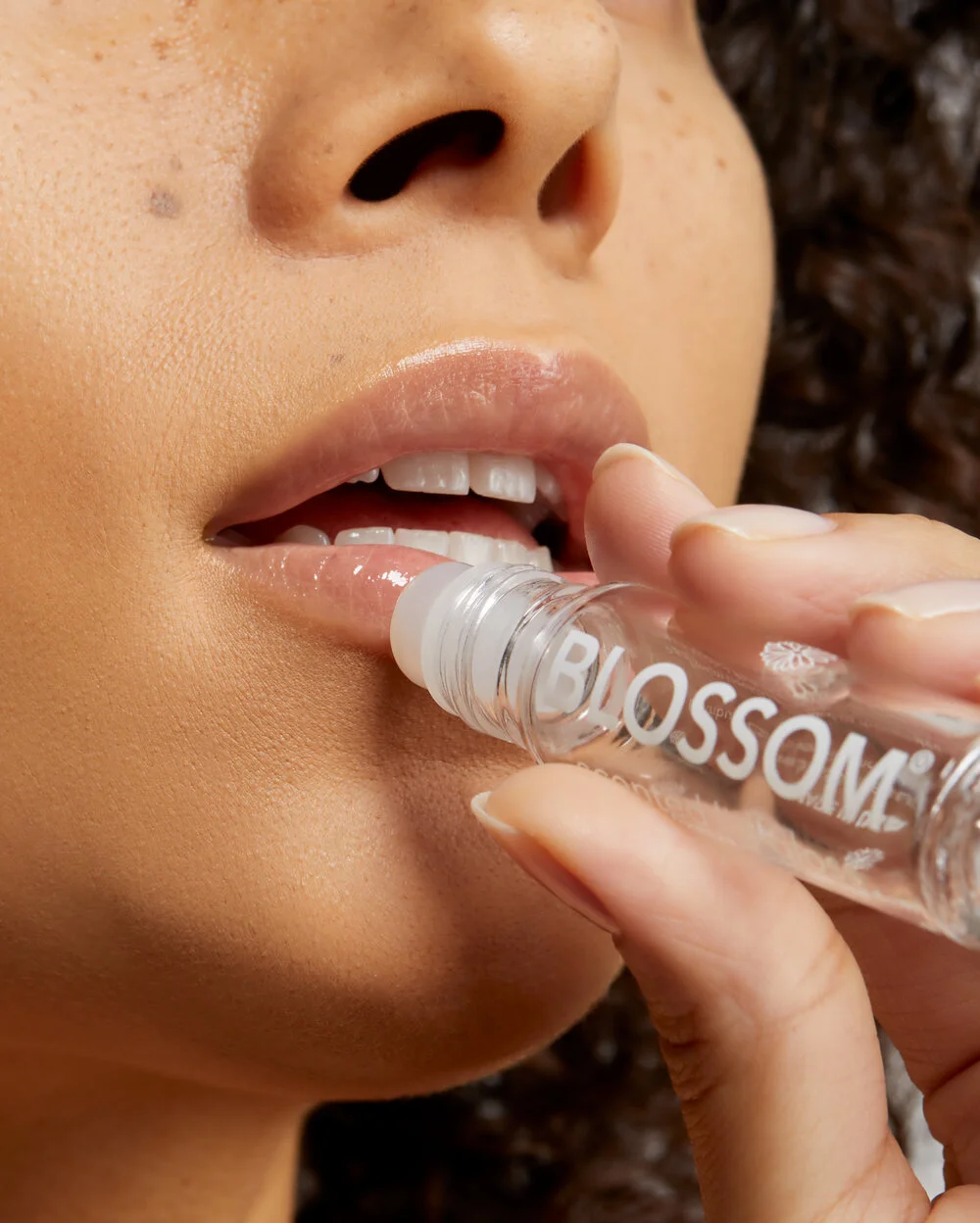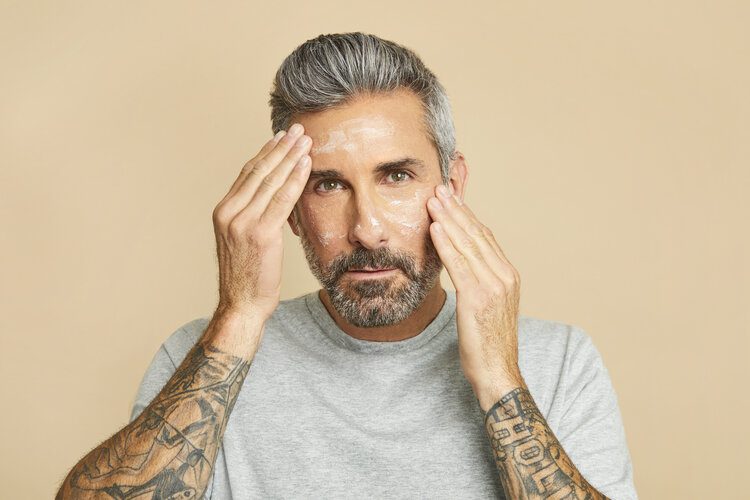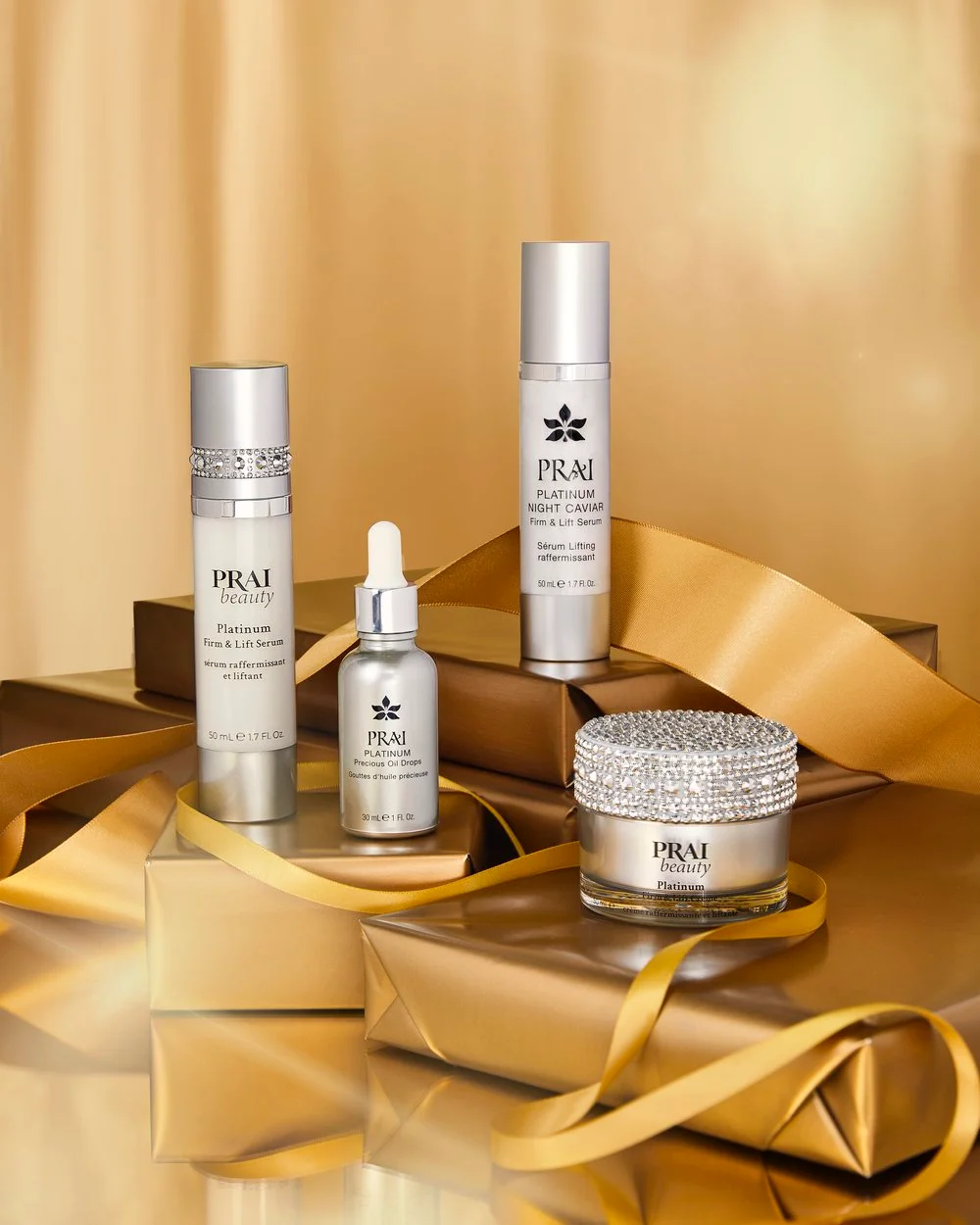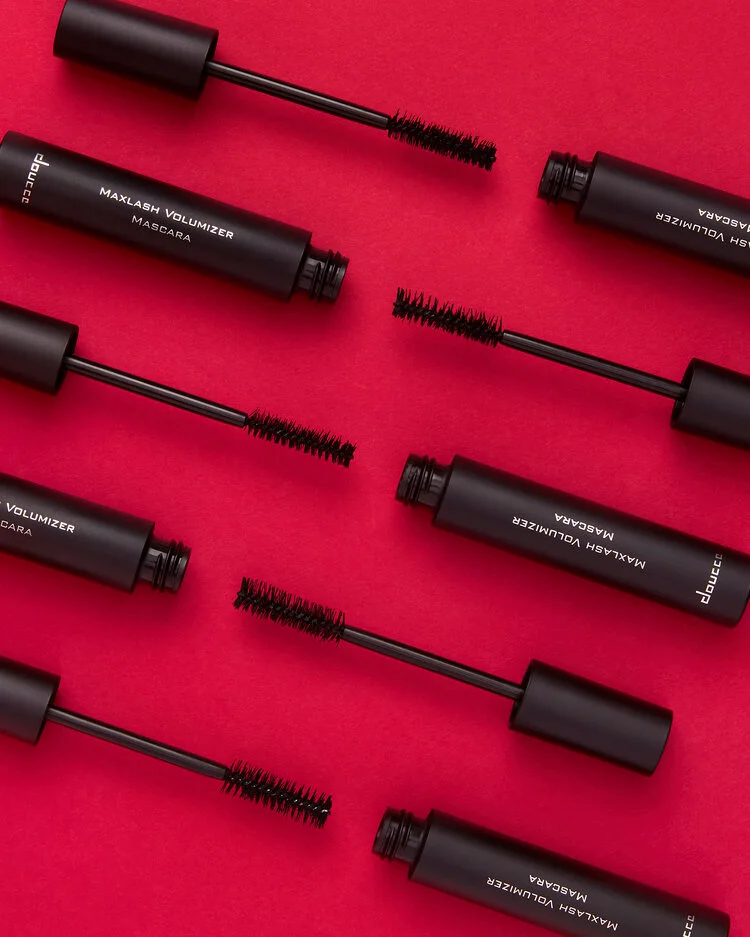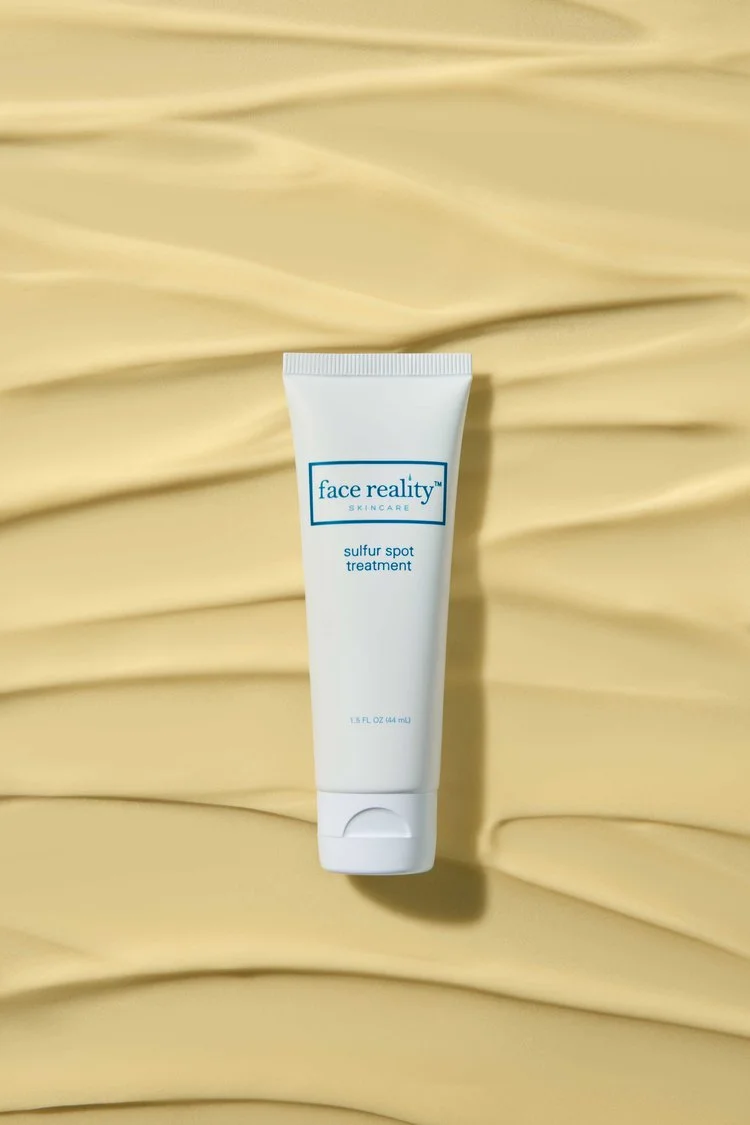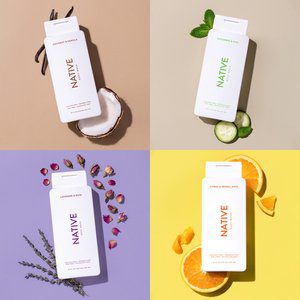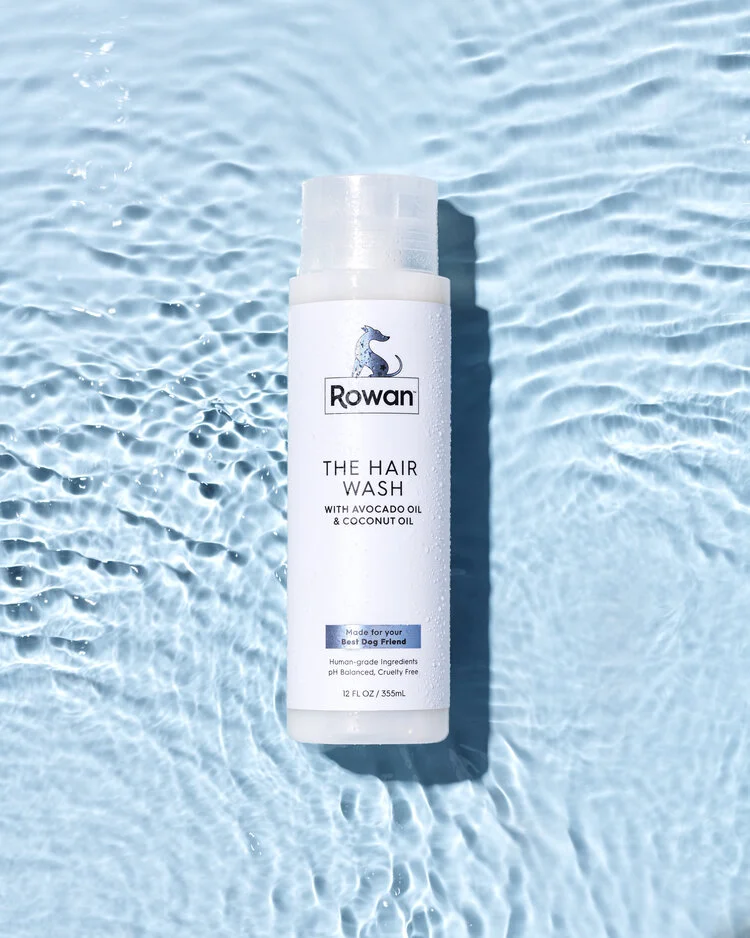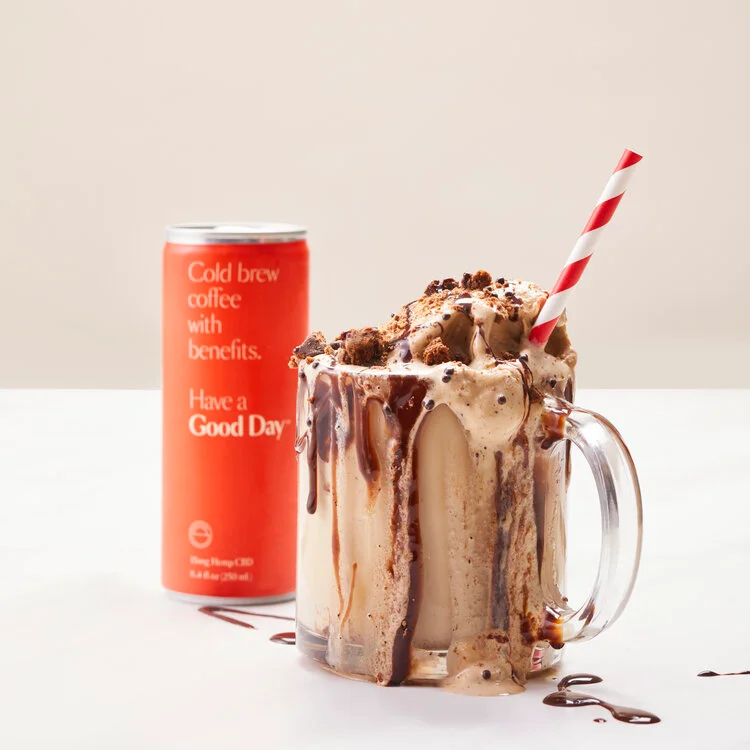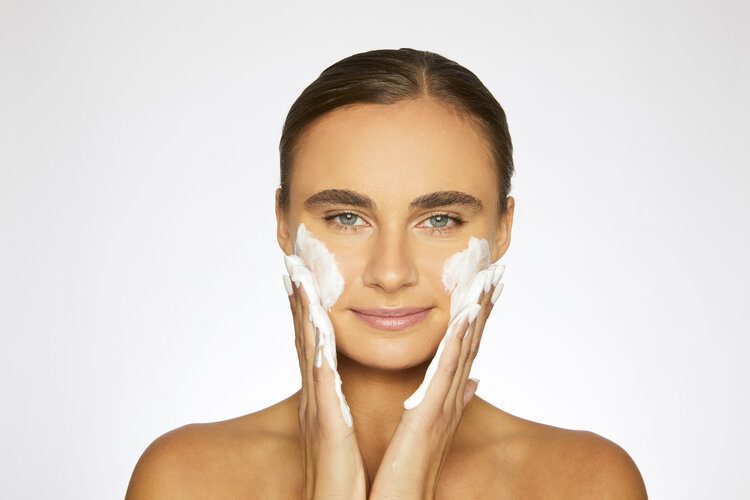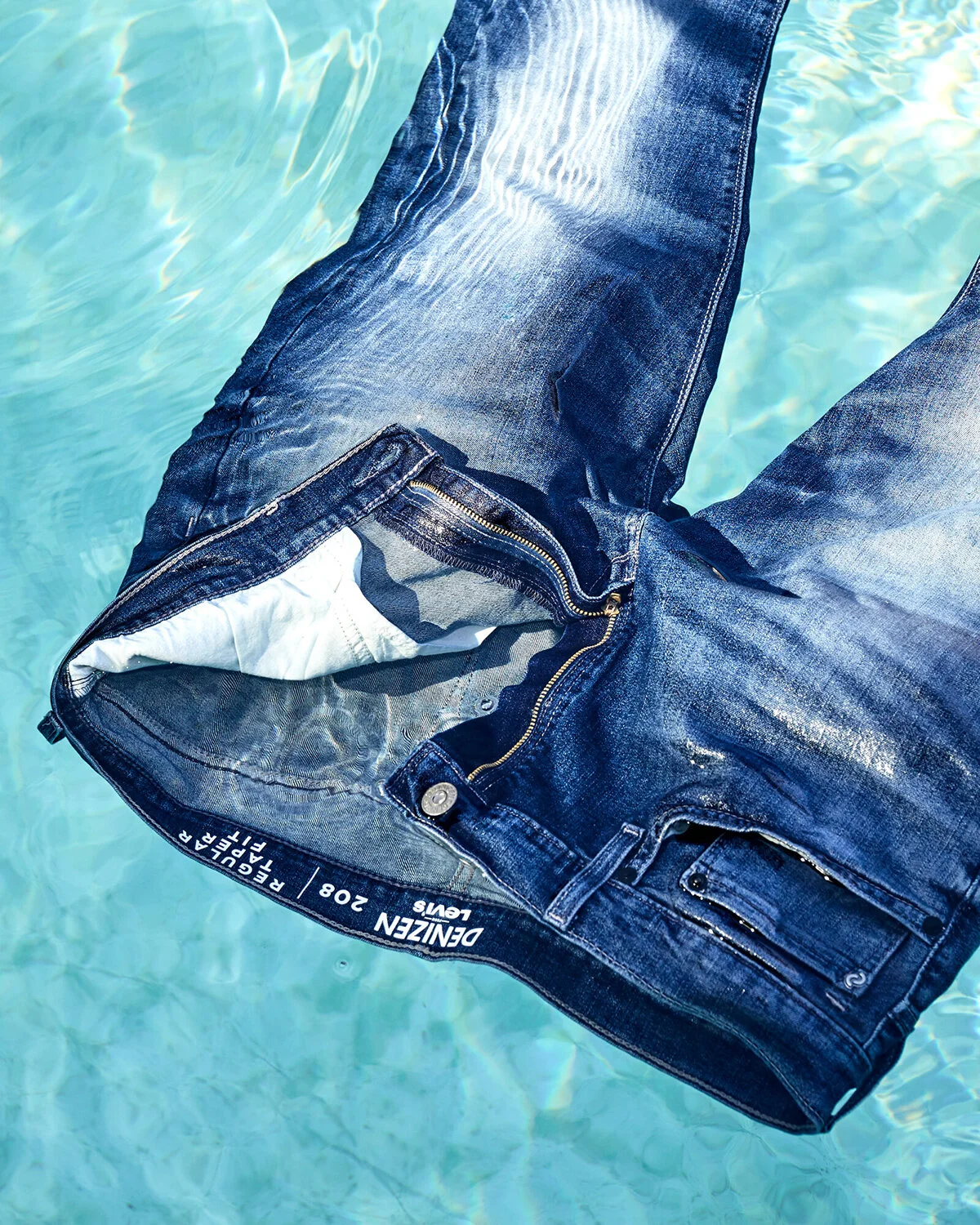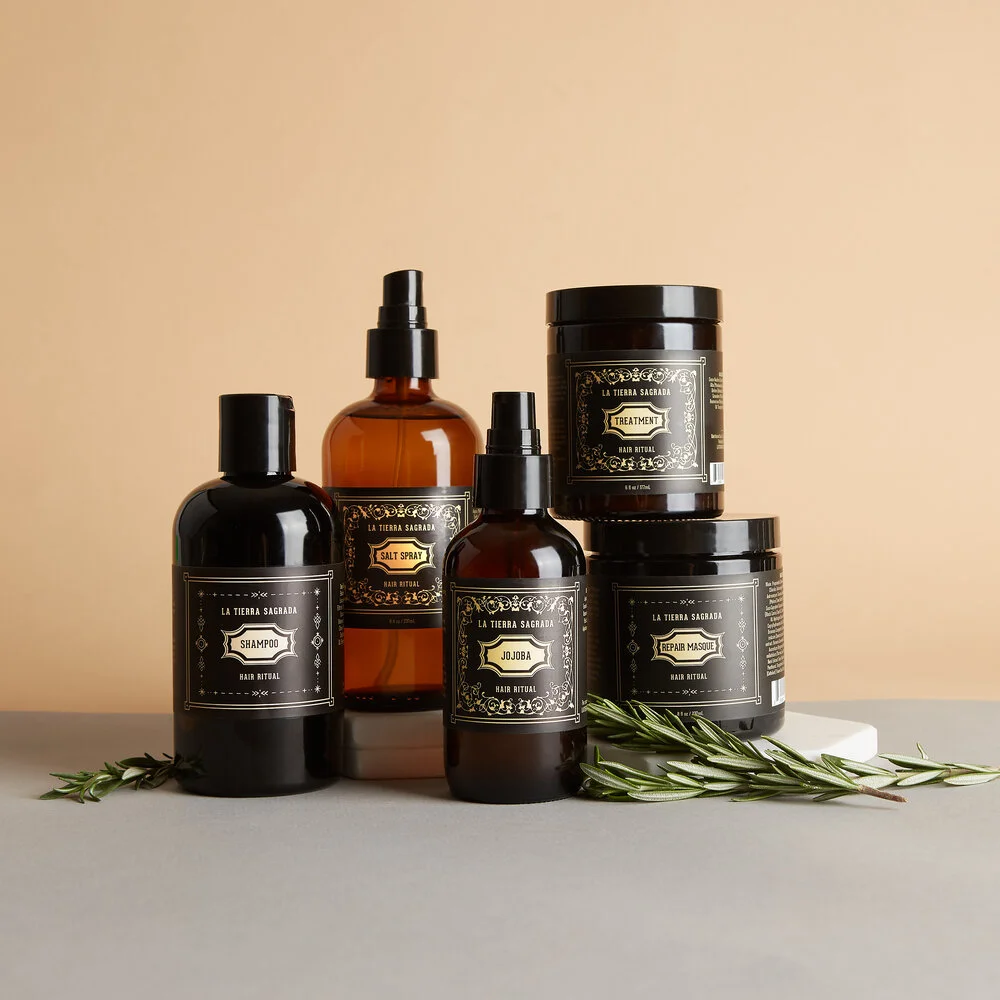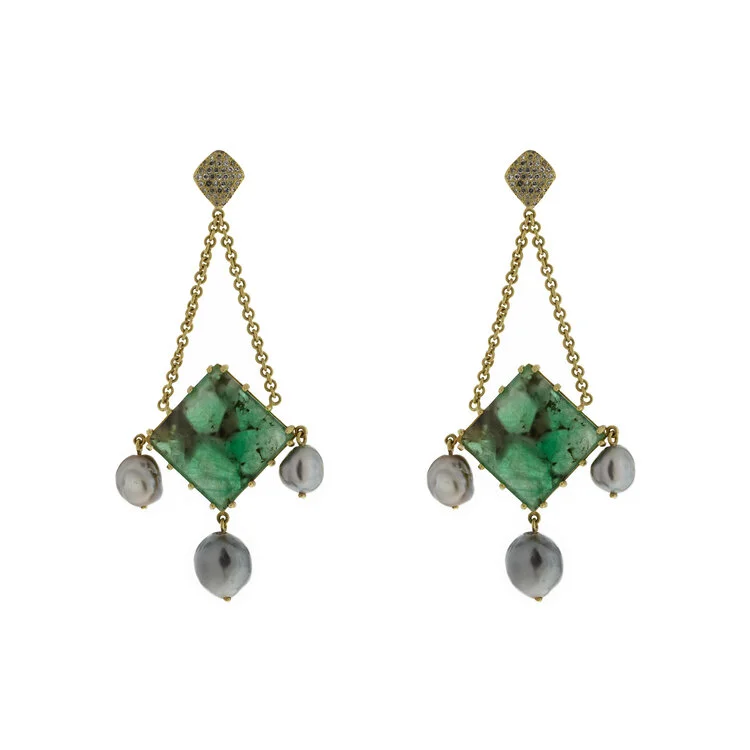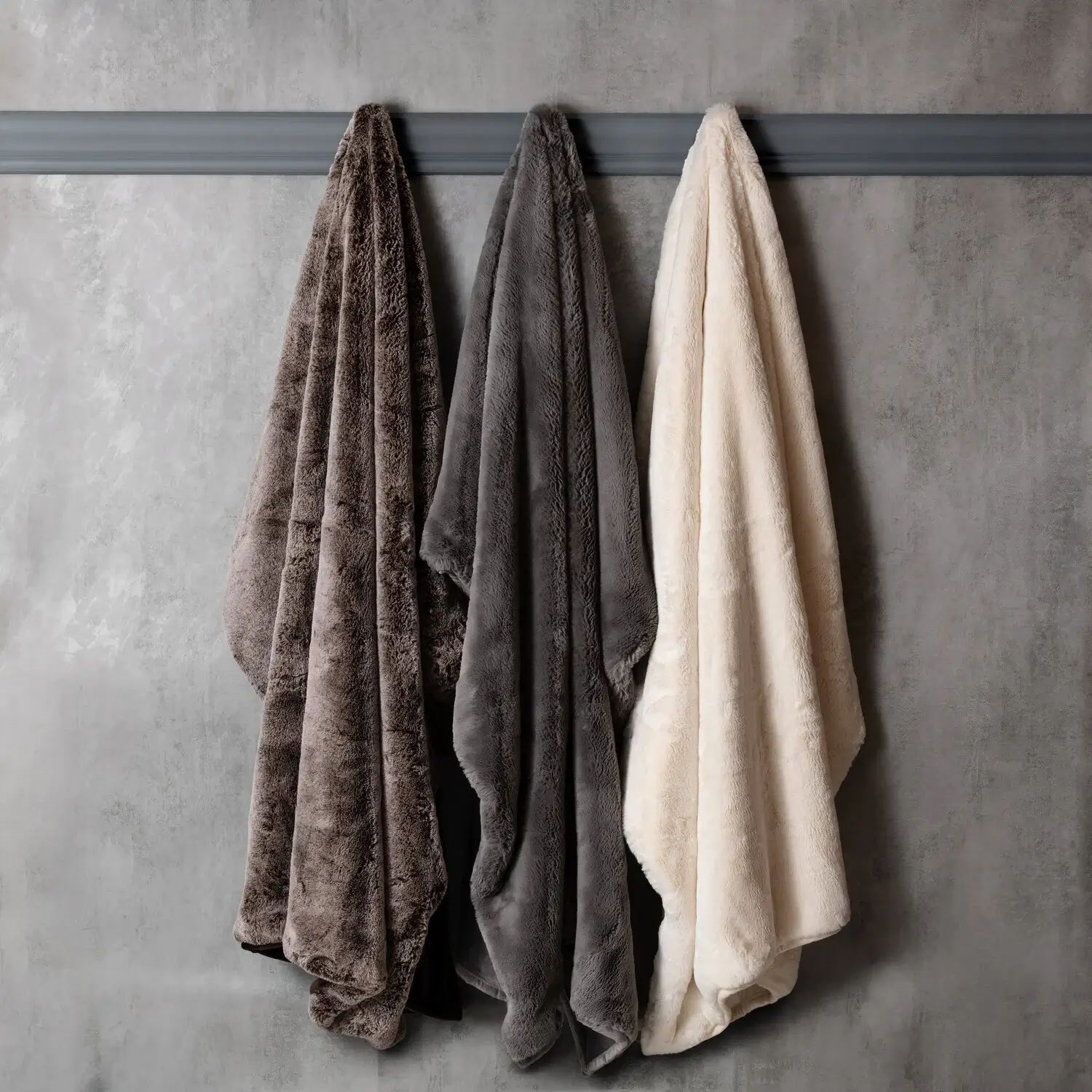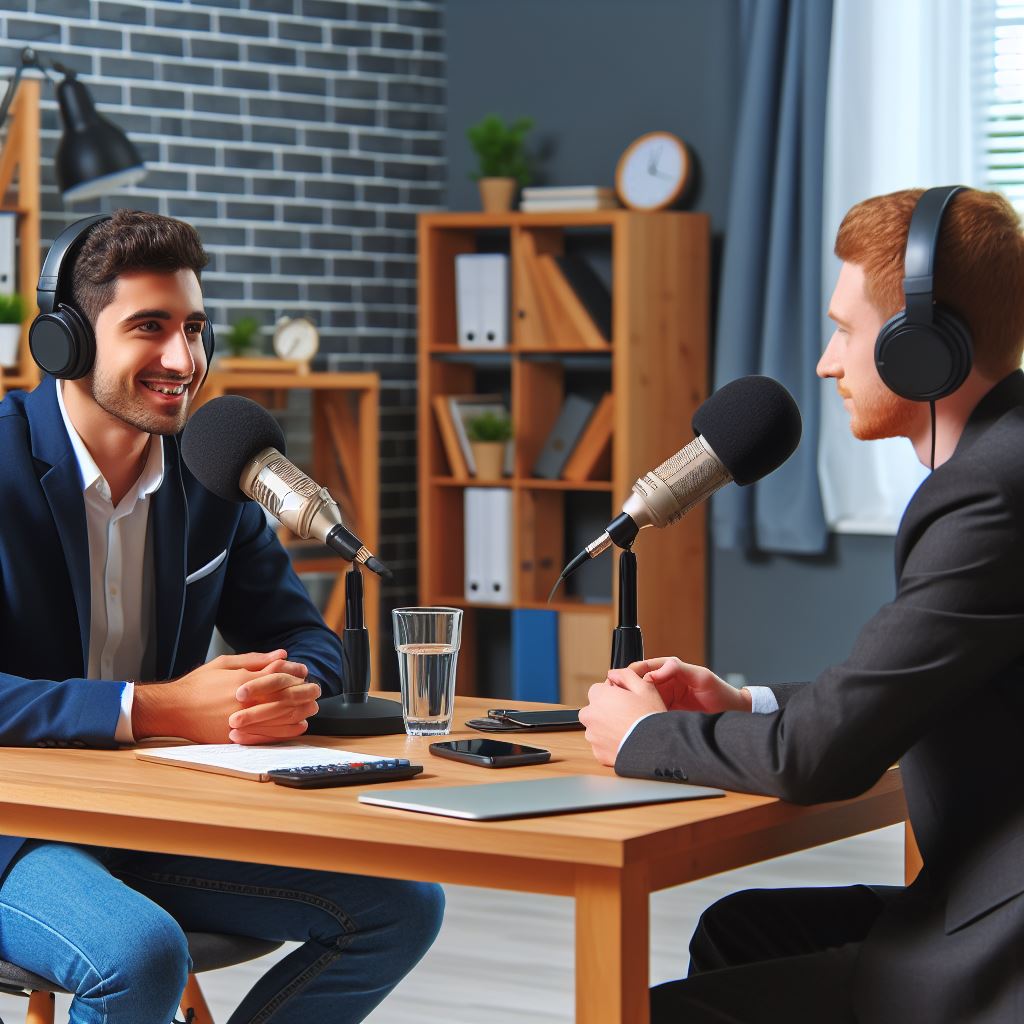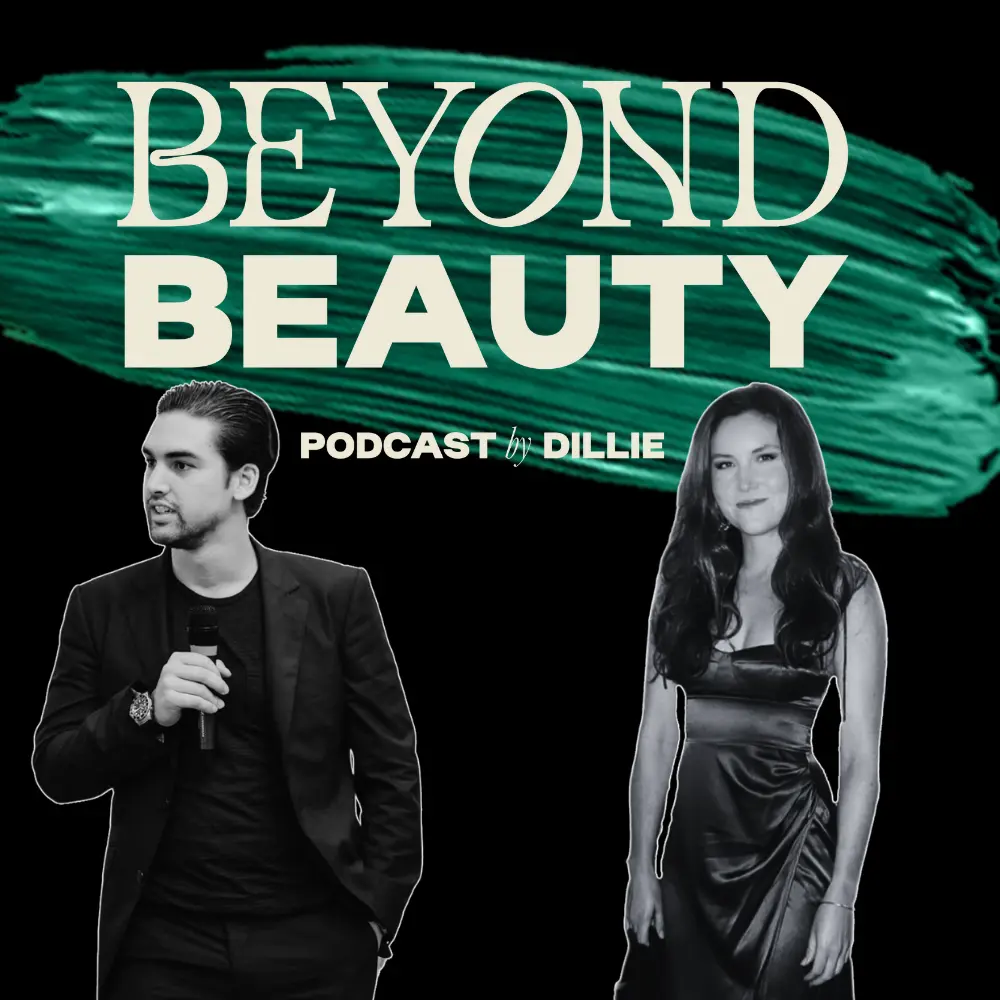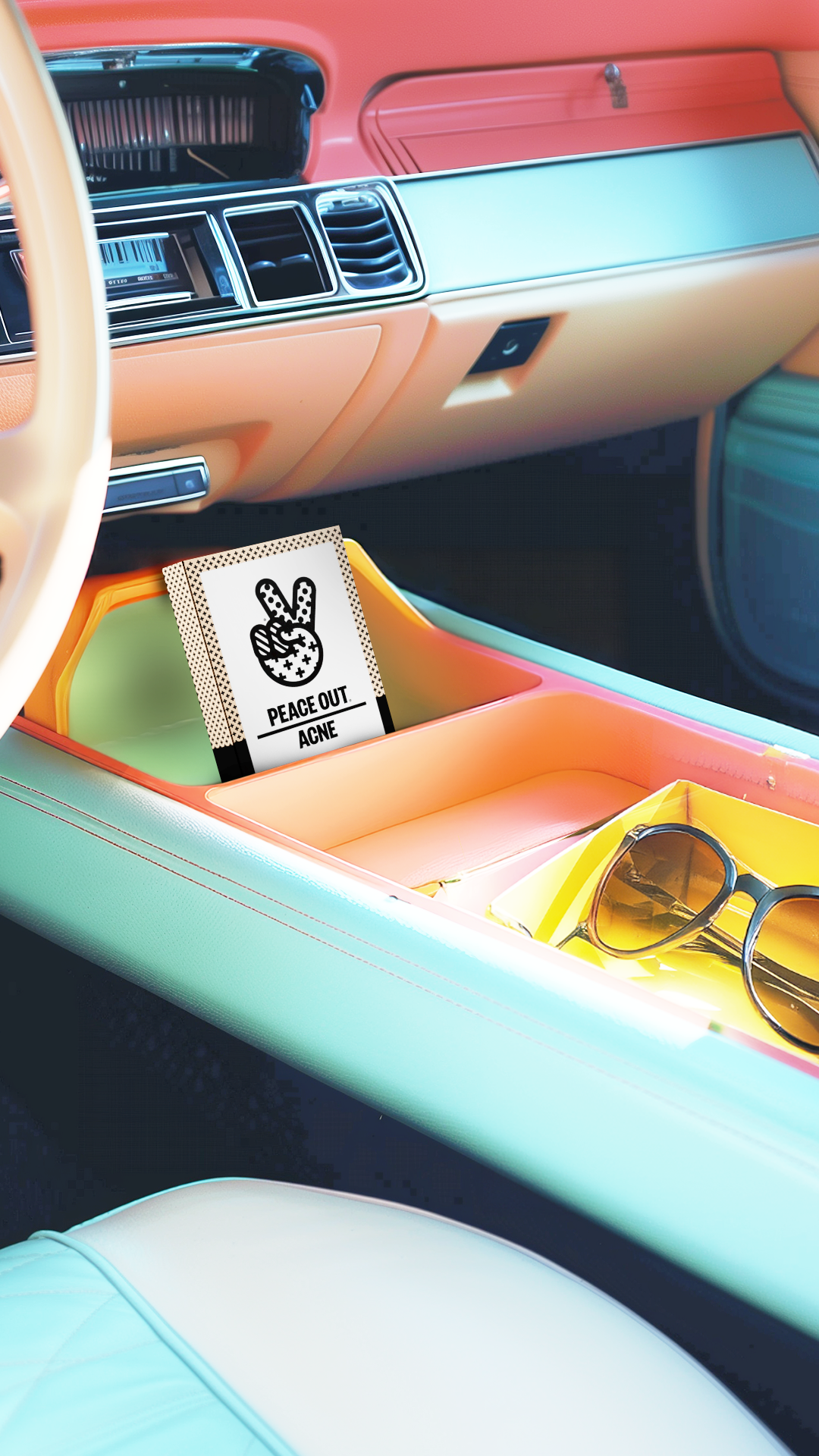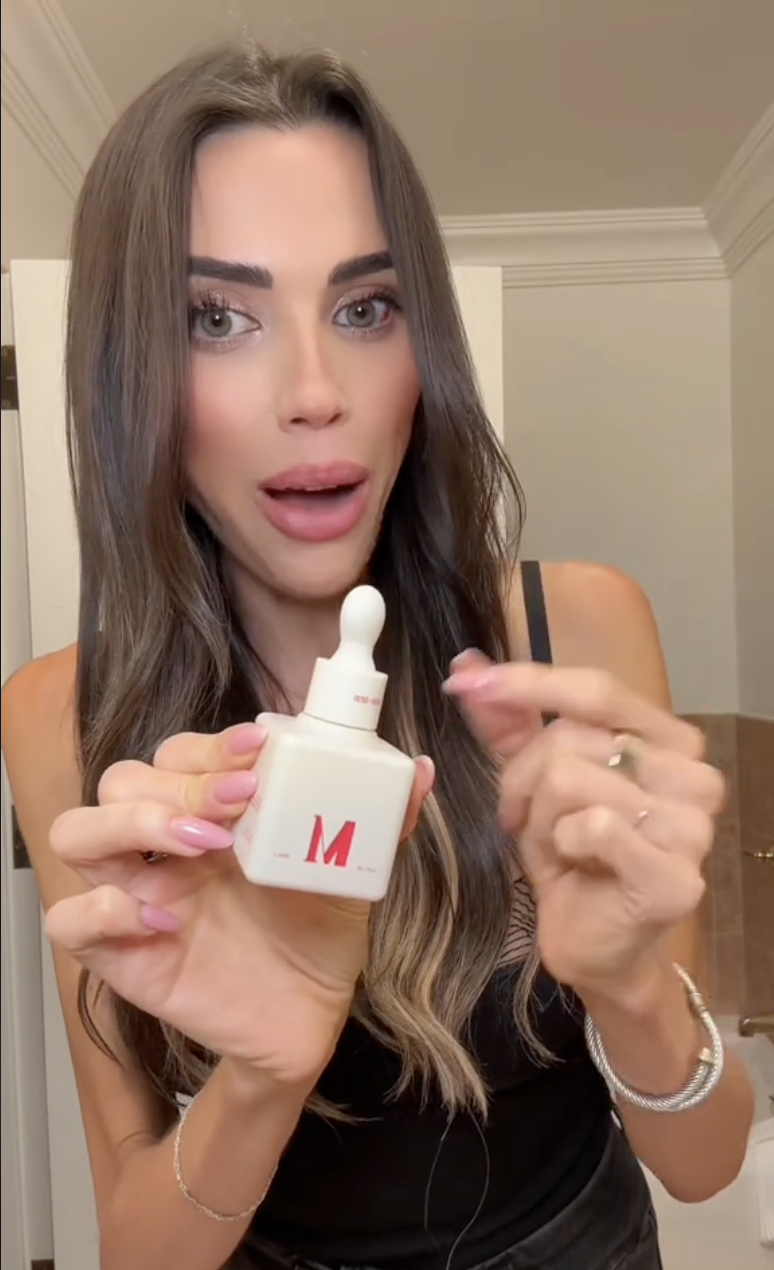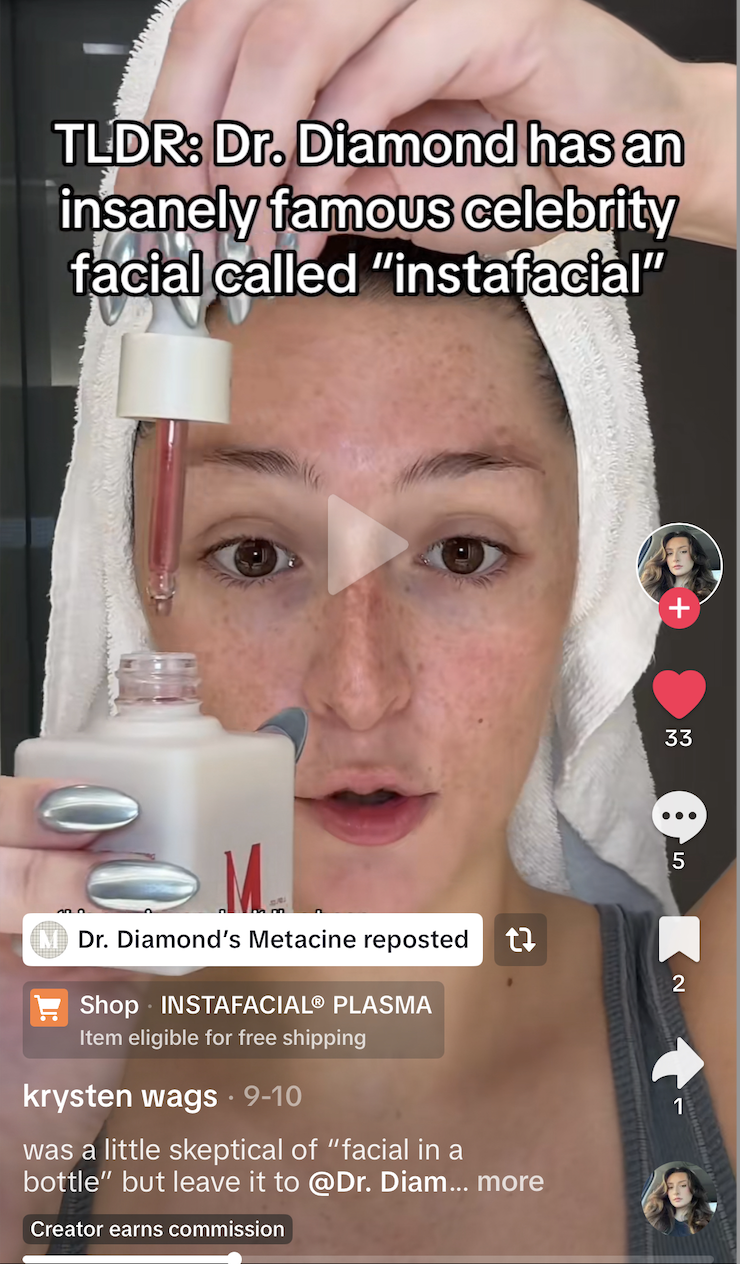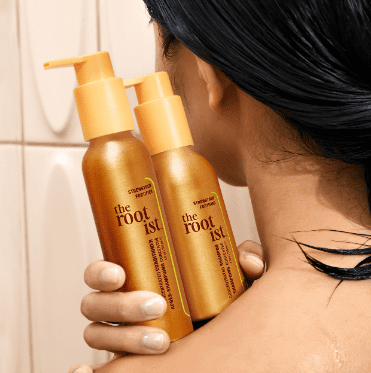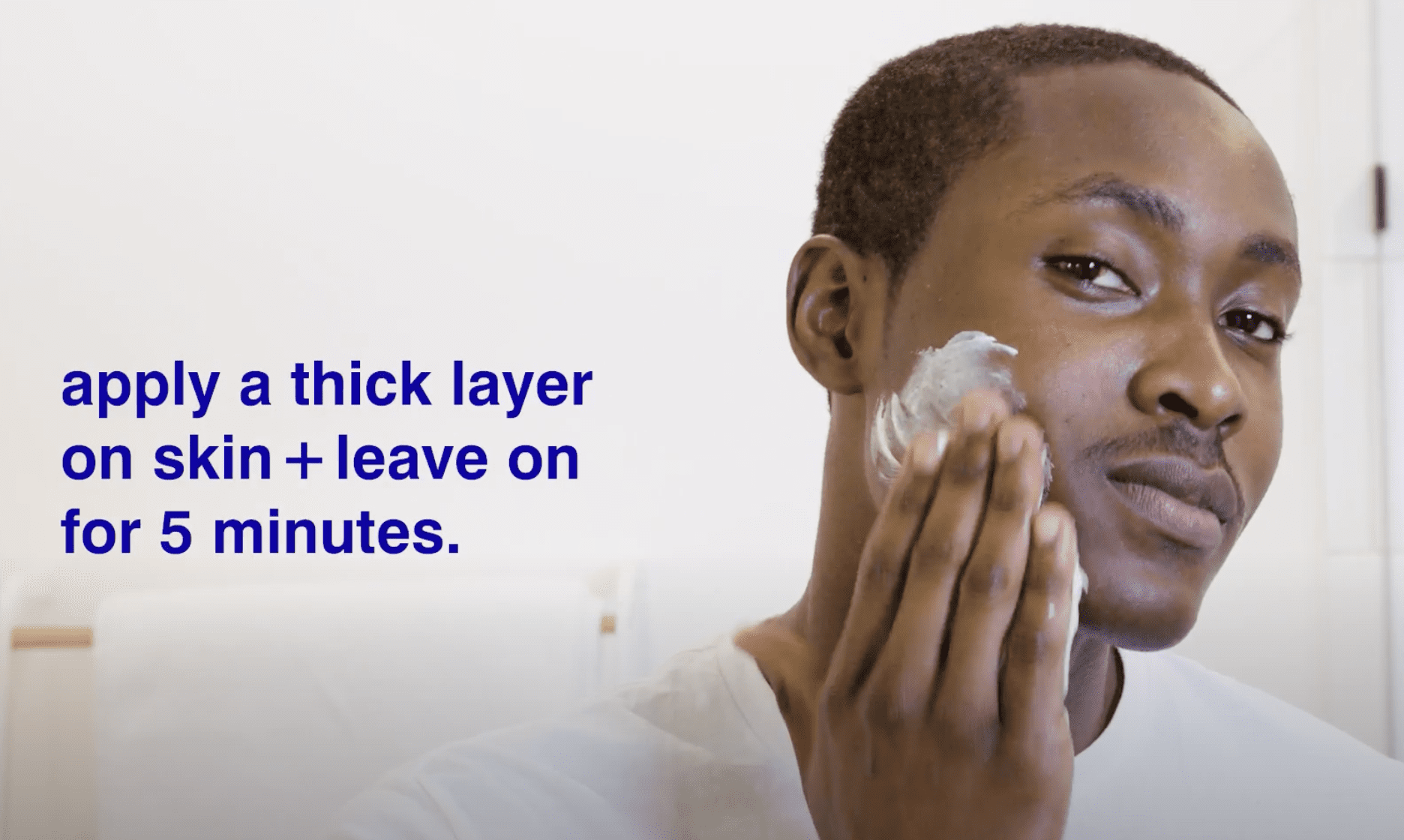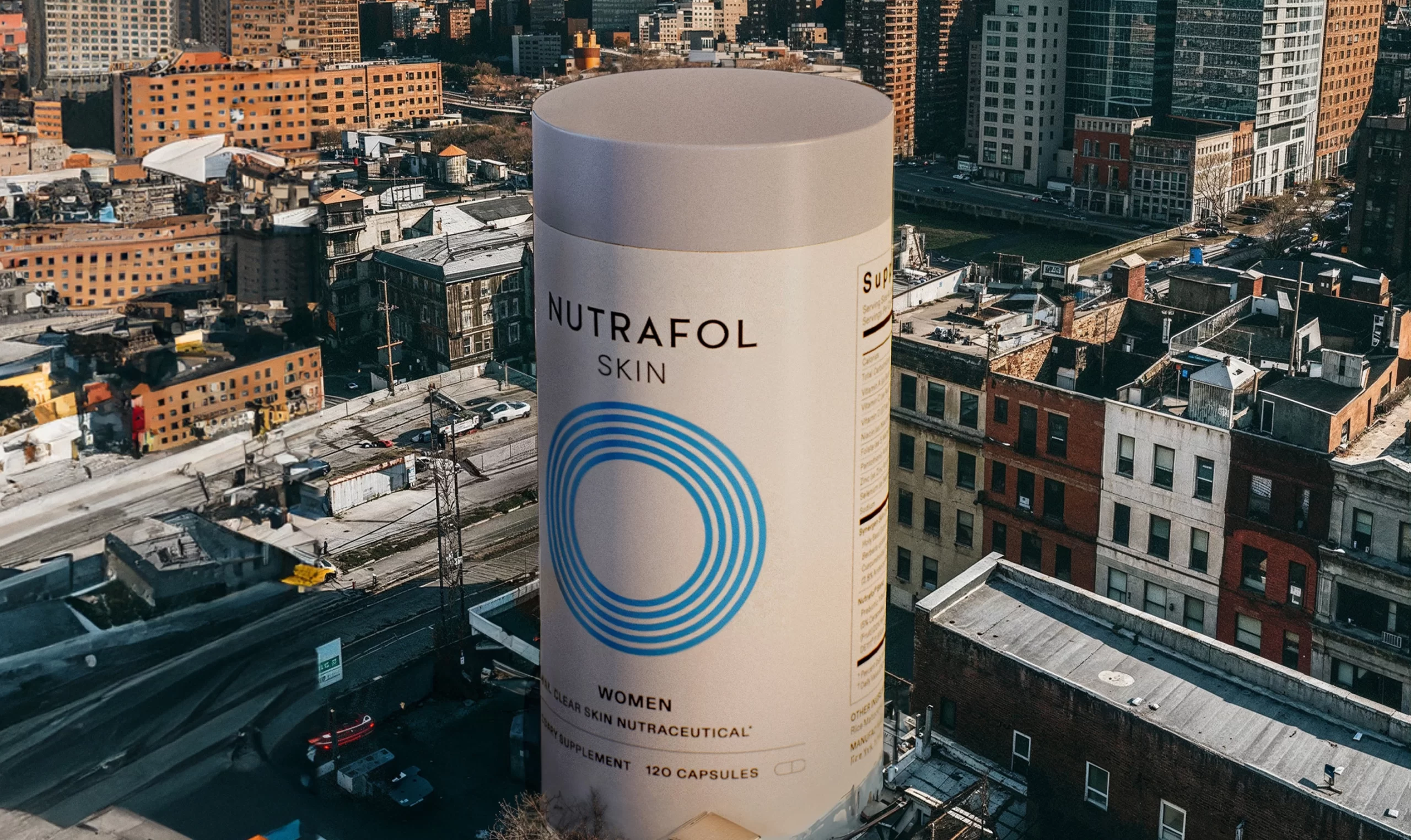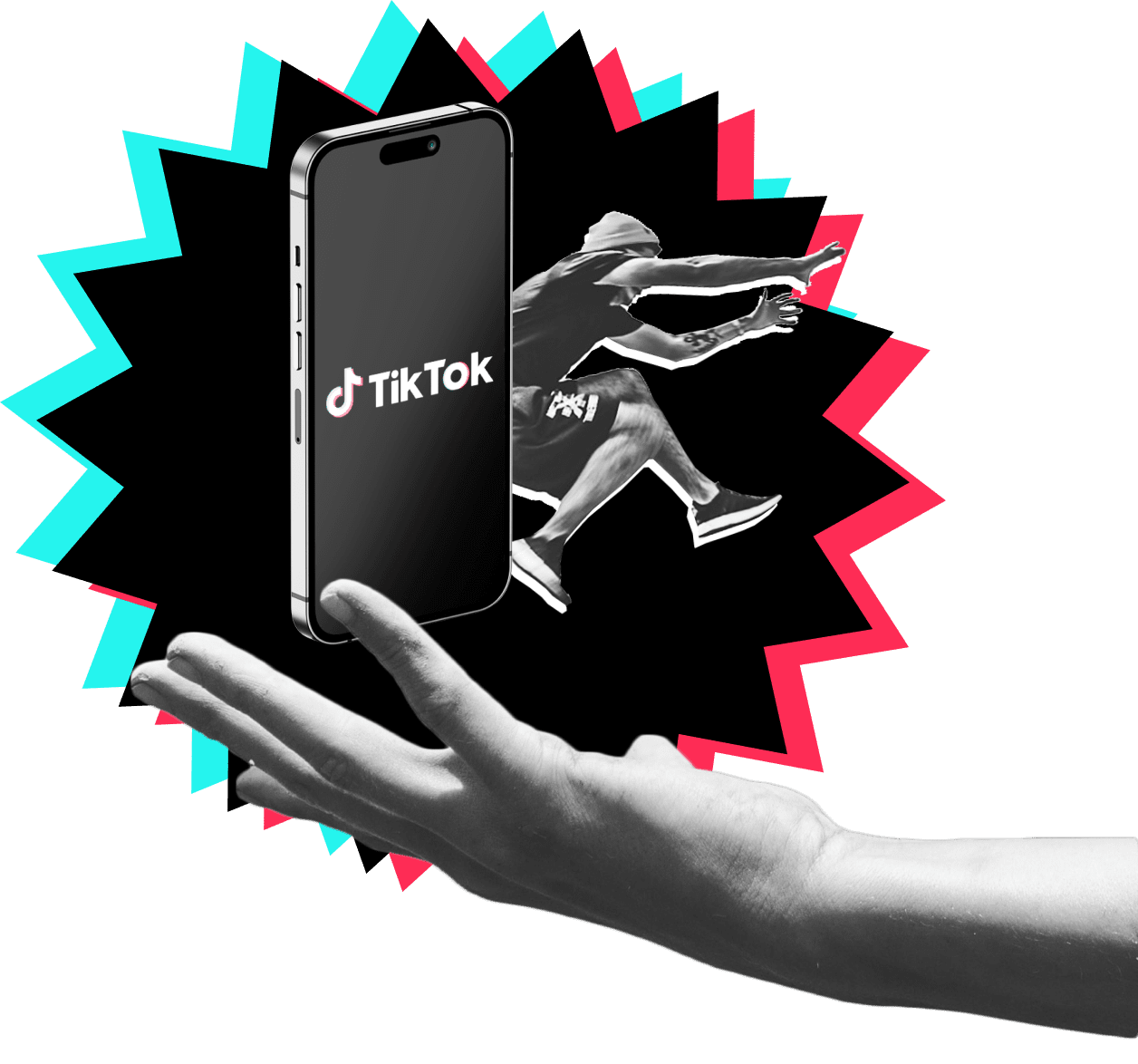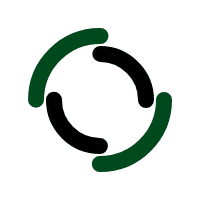In the latest episode of the Beyond Beauty Podcast, the host engages in a compelling conversation with Jana Blankenship, the CEO and founder of Captain Blankenship. This episode delves into Jana’s remarkable transition from a contemporary art curator to a trailblazer in the clean beauty industry. The discussion covers a wide range of topics, including the evolution of clean beauty, the significance of sustainable practices, and the power of storytelling in building a brand. Here, we break down the key insights and actionable advice shared by Jana, providing a comprehensive guide for listeners and readers alike.
Jana Blankenship’s Journey: From Art to Beauty
Early Influences and Passion for Natural Ingredients
Jana’s journey into the beauty industry is deeply rooted in her childhood experiences. Growing up in Cambridge, Massachusetts, she was influenced by her mother, a fashion designer, and her love for nature. This early fascination with scents and natural ingredients laid the foundation for her future endeavors.
Childhood Fascination: Jana’s passion for creating potions and perfumes began at a young age. Her love for nature and natural ingredients was nurtured by her surroundings and her mother’s influence. Reigniting Passion: A pivotal moment in Jana’s journey was discovering a natural perfume in Berkeley, California. This experience reignited her passion for fragrance and led her to study with a perfumer, eventually formulating her own products in her kitchen.
Transition to the Beauty Industry
Jana’s transition from a contemporary art curator to an entrepreneur in the beauty industry was driven by her recognition of a gap in the market for clean beauty products.
Identifying the Gap: In 2009, Jana began researching and developing her line of clean beauty products, starting with essential oil-based perfumes and later expanding to hair care products like sea salt hairspray and dry shampoo. Commitment to Clean Beauty: By 2012, Jana fully committed to Captain Blankenship, driven by her passion for plant-based beauty and the desire to create products that were both effective and environmentally responsible.
The Evolution of Clean Beauty
Early Challenges and Market Landscape
When Jana started Captain Blankenship, the concept of clean beauty was still emerging, and there were few brands in the market.
Limited Availability: Whole Foods was one of the few places where consumers could find clean beauty products. The market was nascent, and there was a lack of awareness about the importance of non-toxic ingredients. Transparency and Integrity: Jana emphasizes the importance of transparency and integrity in the beauty industry. With the rise of greenwashing, where brands mislead consumers about the safety and efficacy of their products, it is crucial for brands to be honest and transparent about their ingredients and practices.
Certifications and Standards
Certifications play a vital role in ensuring the safety and efficacy of clean beauty products. Jana highlights the significance of certifications like Made Safe, B Corporation, and Leaping Bunny.
Made Safe Certification: This certification ensures that every ingredient in Captain Blankenship’s products is vetted for human and environmental safety. It provides consumers with confidence that the products they are using are truly non-toxic. B Corporation and Leaping Bunny: These certifications further emphasize the brand’s commitment to social and environmental responsibility, as well as cruelty-free practices.
The Power of Plants in Beauty and Wellness
Challenging Myths About Plant-Based Ingredients
Jana challenges common myths about plant-based ingredients, asserting that they are not only effective but have been used for centuries as the oldest form of medicine.
Effectiveness of Plant-Based Ingredients: Jana encourages listeners to reconnect with nature and explore the benefits of plant-based ingredients. She highlights nettles as an example, praising their nutritional value and versatility in various applications, from skincare to culinary uses. Historical Use: Plant-based ingredients have a long history of use in traditional medicine and beauty practices. Jana’s approach to formulation is rooted in this rich heritage, combining ancient wisdom with modern science.
Environmental Impact and Sustainable Practices
Sustainability is a core value of Captain Blankenship, and Jana emphasizes the importance of considering the environmental impact of beauty products, including packaging.
Sustainable Packaging: Captain Blankenship is committed to using sustainable materials, such as recycled glass, ocean-bound plastic, and aluminum packaging. Jana explains the brand’s ongoing efforts to find innovative and sustainable solutions. Adaptability and Innovation: The beauty industry is constantly evolving, and Jana believes that brands must be adaptable and innovative in their approach to sustainability. This includes exploring new materials and technologies that minimize environmental impact.
Marketing Strategies and the Importance of Storytelling
Building a Connection with Consumers
Jana believes that storytelling is a powerful tool for building a strong relationship with customers. Sharing the brand’s journey and values helps create an emotional connection with consumers.
Educational Content: Captain Blankenship focuses on education, providing tips and rituals for using their products effectively. This helps consumers understand the benefits of the products and how to incorporate them into their daily routines. Social Media Presence: The brand maintains an active presence on social media platforms like Instagram and TikTok, where they share insights, stories, and educational content. Jana also shares her personal experiences and knowledge through her Substack, offering a deeper connection with her audience.
Overcoming Challenges and Staying Resilient
Jana acknowledges the challenges she faced in building her brand, including navigating the competitive landscape of clean beauty. She encourages aspiring entrepreneurs to remain resilient and approach each day with curiosity and excitement.
Resilience in the Face of Rejection: Building a brand from the ground up is not easy, and rejection is a common part of the journey. Jana advises entrepreneurs to stay resilient and keep pushing forward, even when faced with setbacks. Curiosity and Passion: Jana’s story is a testament to the power of passion and creativity. She believes that approaching each day with curiosity and excitement can help entrepreneurs stay motivated and inspired.
Conclusion: Embracing the Future of Clean Beauty
In conclusion, this episode of the Beyond Beauty Podcast offers a rich exploration of Jana Blankenship’s journey as an entrepreneur in the clean beauty space. Her story highlights the importance of authenticity, education, and storytelling in connecting with consumers and promoting a more sustainable and responsible approach to beauty. Jana’s passion for her work and her dedication to making a positive impact resonate throughout the conversation, leaving listeners inspired to embrace the beauty of nature and the potential for change in the industry.
Podcast Transcript
Speaker 1 00:00:01 Welcome to the Beyond Beauty podcast, a platform to highlight the beauty industry’s talent, deconstruct their learnings and spark ideas for your own business. The Beyond Beauty podcast is created by Dillie, the leading creative agency working with the fastest growing brands and beauty. Here, we’ll interview guests from major beauty corporations, creative directors, influencers, founders and risk taking entrepreneurs. Our guests are not only changing the traditional beauty landscape, they are also innovating in e-commerce, branding and digital marketing. Join us as they share valuable advice, how they launch their businesses and most importantly, ignite thought provoking conversations across beauty, tech and marketing. Hello everyone! We’re so excited to have Jana Blankenship on the Beyond Beauty podcast. So Jana, thanks so much for coming on the podcast today to share your story.
Speaker 2 00:00:54 Oh, I’m so excited to be here and I can’t wait for our conversation today. Amazing!
Speaker 1 00:00:59 Jana Blankenship is the CEO and founder of Captain Blankenship Seaweed Powered Hair Care, and a passionate educator about the power of plants for beauty and well-being.
Speaker 1 00:01:08 Founded in 2012, Captain Blankenship is a clean hair care company that makes plant based hair care and styling products with regenerative seaweed organic ingredients and sustainable packaging. Social and environmental responsibility are at the heart of a company, which is a B corporation made safe, approved, Leaping Bunny certified and part of the 1% for the planet. Captain Blankenship was born out of Jana’s desire to create organic beauty products and create a direct link with nature, from its birth in Johnny’s Kitchen. The company is now sold at retailers including Grove Collaborative, Credo Beauty, The Detox Market and Anthropologie. Jana received a bachelor’s and a bachelor’s in fine art from Cornell University, and a masters from the college from the California College of the Arts. She was a contemporary art curator before she left the world to focus on Captain Blankenship. In addition to being the founder, CEO and formulator at Captain Blankenship, she is an herbalist and a passionate educator about the power of plants and the importance of connecting with the natural world. She is the author of Wild Beauty, wisdom, and Recipes for natural Self-care and co-author of A Seasonal Family Almanac Recipes, rituals, and Crafts to Embrace the Magic of the year.
Speaker 1 00:02:19 She lives in New Paltz, New York with her family. Amazing, Joanna. Let’s take it back.
Speaker 2 00:02:24 To how.
Speaker 1 00:02:25 It got started. So you were doing something completely different before you got started and the beauty and wellness industry. So how did you get started in your career and then when did you make this pivot into beauty? Take us back to where it started. Yeah.
Speaker 2 00:02:36 So I will take it back to childhood, but I yeah, I had a whole other career as a contemporary art curator. I had just finished my Masters. I actually I was working as an assistant curator at a contemporary art institute in San Francisco. I got to be the assistant curator on the Istanbul Biennial. Everything was leading me to be a contemporary art curator. And then one day I was I lived in Berkeley, California, and I discovered this natural perfume in a store, and it smelled like jasmine and blood orange and grapefruit, and it just smelled like the hills of North Berkeley where I lived. And I found the perfumer who made it.
Speaker 2 00:03:15 And I started studying with her, and I never looked back. And it’s funny because it was like I picked up a thread that I had started in childhood. When I was a kid, I was always that kid who was outside making potions, and now I have two little potion makers myself. But I grew up in Cambridge, Massachusetts, and my mom was a fashion designer, and I was always outside mixing roses and mint and pine needles and water and making these creations and trying to feed them unsuccessfully to everyone around me. And my mom saw that penchant for alchemy, and she had this beautiful mirrored vanity in the bathroom that was just filled with the most exquisite perfume bottles. They don’t make them like they did in the 80s, and they all had names like Obsession and Poison. And I was my eyes lit up and she didn’t care about them. She would go places and bring them home and it meant it really didn’t mean anything to her. So I started mixing my own perfumes, and I would add a little dash of this and put it right up to my nose and a little more of this, and I actually ended up poisoning myself.
Speaker 2 00:04:17 I developed a sensitivity to synthetic fragrance that I still have today. When I smell synthetic fragrance, I feel nauseous, I get headaches, I yeah, I get a completely visceral reaction And as synthetic fragrance is in everything from scenting personal care products to trash bags to being pumped into stores.
Speaker 1 00:04:38 My number one pet peeve is walking into someone’s house and they have a scented trash bag. I will literally go if especially if I’m staying there, I will go down the street and buy them trash bags that have no sense to them and it’s hard.
Speaker 2 00:04:50 People don’t even notice. But yeah, I abandoned my love of making sense, steered clear of anything fragranced. And then it was. It was like Proust. Like eating the Madeleine and Swann’s Way. Like I smelled this perfume. And it just it brought me back to my love of making perfume. And so that’s where the brand started. And it was a happy accident. I just in my kitchen started making essential oil based perfumes. And the R&D for Captain Blankenship really started in 2009, and before there were very many, few there were very many clean beauty brands and know retailers like Credo Beauty and the detox market.
Speaker 2 00:05:26 And I just started making anything myself, a family member or friend couldn’t find a clean swap for. And so from perfumes I started to make actually our Sea salt hairspray, which is the cult hero product of the line, was one of the first products I formulated because friends were using the Bumble and Bumble Surf Spray, which is doesn’t even have salt in it. It’s all chemicals. And I was like, I can do that. So our sea salt hairspray and actually our dry shampoo were some of the first products I ever formulated for the line. And yeah, from there it grew through word of mouth and eventually I friends stores started picking it up in the Bay area, and at that time I was making everything from perfumes to skincare, haircare and body care. I studied herbalism and took any classes that I could. So I used to make soaps as well. And from there, in 2012 we moved to the Hudson Valley where we live now, and I found out I was pregnant with my daughter Mila, who’s now ten, and I realized I can’t.
Speaker 2 00:06:27 I was applying for jobs as a curator and realizing that I couldn’t do it all at that point, and that I was really passionate about plant based beauty. And so I decided to just dig my heels in and follow that. And really, in 2014, 2015, the brand started to grow. And it’s yeah, it’s been an incredible journey to where we are now, which is we exclusively sell hair care products because the as time went on, the market for clean beauty really grew. There are so many brands now, and we’ve just always been known for hair care and not just not like your salon equivalent haircare, but I’m always embodying myself. But wild, effortless hair care for all types that gives you your best hair naturally and really frees your mane. So we are now we have a beautiful line of seaweed powered haircare.
Speaker 1 00:07:14 And so when you’re growing, Captain Blankenship, I’m sure you’ve seen such an impact within the clean beauty space. Sure. In 2009, I’m trying to think back to that point, is that even Whole Foods was in some ways progressive in most parts of the country, maybe not so much in California and and Austin, where it originated.
Speaker 1 00:07:32 But this idea of non-toxic ingredients and understanding what we’re putting in and on our body, that was there was it wasn’t really making a mainstream impact, I would argue, till maybe like 2018, I would say on average, maybe even a little bit later. So how have you seen the impact of clean beauty? How has it helped, how it’s become more competitive within the space? What do you think is next for clean beauty? And really.
Speaker 2 00:07:59 Yes, it was wild when I started Captain Blankenship, Whole Foods really was the spot and there were health food stores in general to buy clean beauty products, but they were always and part of it for me, my love of sense and essential oil based sense, they were always really one noted. They smelled like lavender or vanilla and just weren’t very exciting. So with Captain Blankenship, it was really for me about always pairing the best organic, plant based ingredients with experiential, essential oil based scents. And I’d say when Credo Beauty opened in, I think it was 2014 and the detox market at the same time, that really felt like the beginning for me of this clean beauty movement.
Speaker 2 00:08:38 But it was slow to pick up. And the interesting thing about us is we’re in a different position now. But we had in the past we’ve had products in a lot of mass retailers, including Target and Whole Foods and online with Ulta Beauty. And until 2018, I don’t even think that there was no real awareness. It was like it was a fad. It was like, oh, we want to bring on clean beauty brands, but really with no awareness of what that meant. And it’s exciting now because I do think that Clean at Sephora, all of the standards that are there now for major retailers, that is making it possible for clean beauty brands to be in these retailers and to be supported. And consumers are more aware than ever of the toxins in beauty products and how to read a label. The one challenging thing that we’ve seen, especially in the past five years, is with the rise of clean beauty and a lot of brands jumping in because it seems like the thing to do, maybe without a lot of integrity, is there’s a lot of greenwashing.
Speaker 2 00:09:41 And and I think that’s really dangerous because it’s very misleading to the consumer. And it puts the onus on the consumer. And that’s why at Captain Blankenship, we have a lot of certifications from being a B Corp, meaning which we’ve been since 2017, which was always my North Star for the brand, meaning that we’re a company that puts people and planet first over profits and then as a made safe, certified brand. So every ingredient in our products is vetted for human toxicity, environmental and aquatic toxicity. Wow. So I think it’s necessary because otherwise it’s very hard for the consumer to to put the pressure on them to be able to have to identify every ingredient. And, and.
Speaker 1 00:10:23 It’s also a way of certifying of which beauty products are clean and non-toxic, because a lot of times people are, like you said, they’re greenwashing, they’re adding a label, and then you look at the ingredients and depending on your knowledge level, you can say, these ingredients aren’t good for me or they’re not good for the planet or both.
Speaker 1 00:10:38 And so with Made Safe, I think that’s a really a powerful way of saying this is certified. There’s a standard that you could follow less than just a marketing messaging completely.
Speaker 2 00:10:47 And it’s for us too. It’s that it’s on our bottle. You see that and you know that it’s been vetted. And I completely agree. The misleading marketing. It’s hard to know. You think a brand is clean just by the way it looks and the language that they’re using. But it you really need to know what’s inside the bottle. And then also for me it goes hand in hand with using sustainable packaging.
Speaker 1 00:11:09 So let’s talk about the name. Where did the name come from. It’s such a creative and fun name. How did. Yeah. What’s the origin of Kevin Blankenship.
Speaker 2 00:11:15 Sure. So my husband’s last name is Blankenship. And when I heard it, I just fell in love with it. And I had a long, hyphenated last name, and my parents were divorced. And I really felt like it was something that I could leave aside.
Speaker 2 00:11:29 And so when I got married, my best friend joked that I was going to be the captain of the Blankenship, and when I started the company, there wasn’t even any. It was like, It’s Captain Blankenship and the original the our logo is different now, but the original logo was just like my script on a piece of paper, drawings, watercolors. It was very homegrown. But yeah, it’s funny. I it’s it’s a quirky name, but I feel like it really does suit the brand. And there’s playfulness and a spirit of going out into the landscape, and especially now as we over the course of the story of this brand, we’d always used seaweed in the products, but now it’s really we’re seaweed powered haircare. It’s the main focus. So we really are Captain Blankenship. We’re going out there and using seaweed.
Speaker 1 00:12:14 It’s such a creative and fun name, I love it. It’s really, I think when I think of it, I think of steering the way of paving the way of what’s next and and haircare and making a difference, rather than just following trends and doing something that’s unique and for people.
Speaker 1 00:12:26 So let’s talk about that.
Speaker 2 00:12:27 Hair haircare. That’s exactly what we’re doing.
Speaker 1 00:12:30 Perfect, perfect. That’s what I think of. Let’s talk about haircare. Because 2024 has been coined by many editors, beauty gurus, TikTok creators as the year of haircare. I think it definitely started with everyone was doing a slicked back bun from 2022 up until now. Definitely is causing a lot of damage on her hair. We went through a huge push of bleaching hair. Blonder the better. We’re flat ironing, we’re straightening, we’re curling. We’ve done a lot of damage to our hair as a society. And while it’s fun to have playful hair, it’s also it’s not good for your hair. So I think 2024 is all about getting back to healthier hair. So let’s talk about hair care. What trends are you seeing? Or even if it’s a lifestyle change? And how is Captain Blankenship fitting into that world of hair care is here to stay.
Speaker 2 00:13:17 Sure. No it is. And I think what’s been described as the skin ification of haircare.
Speaker 2 00:13:21 And I think that’s very much where we are. I think people are realizing I’ve done all of these fun things to my hair over time, but now I really got to take care of it for the long term. And I think to being within clean haircare, I think there was this myth that which is funny because it was there was skincare too. But then now there’s so many incredible skincare, clean skincare brands. But I think people think that clean haircare isn’t effective and that it’s just Castile soap and it’s not. It’s going to it’s not going to leave my hair looking great. And in fact it can. And the oldest ingredients in haircare are plants. But we’re lucky now because there has been a real revolution in clean haircare and clean, functional ingredients. So you really can have a product that’s 100% plant based, that really works and can work for all hair types. So I think people are searching and even something like rosemary, essential oil or rosemary for hair care, that’s what people are googling and that’s one of the oldest ingredients for hair care.
Speaker 2 00:14:22 So I think we really are going back to the old ways, which is nice. And for me, I feel like my grandmother was the first person who told me, put oil on your hair, use a nettle, rinse on your hair. It changed my life. It’s given me I have my best hair ever now and I don’t. It’s minimal effort. And I think that’s the thing is, you can have great hair and it can be easy and effortless just using great plant based products.
Speaker 1 00:14:47 I love it. So let’s talk about marketing. So we’re telling a lot of stories about product. I know you’re a big educator as well, and that’s a huge component of haircare care, and especially getting into clean beauty and talking about how to use the products, but also about the efficacy of the products. So how is Captain Blankenship marketing? How are you finding your consumers? How are you working with retailers, social media, and more to make those connections?
Speaker 2 00:15:09 Yeah, it’s interesting for me as a founder who started so early before social media was there was that component to it and just seeing the growth of everything.
Speaker 2 00:15:19 And I think for us, so much of the brand, everything we’re doing, it’s so exciting to be able to tell our story across platforms and especially as a brand. You were asking where where clean beauty is going. For me, we consider ourselves blue beauty. Clean beauty is murky. It’s become what natural beauty was. And so we’re really a company that’s a force of good for people and planet, and we’re making products that are actually helping, hopefully helping to solve the climate crisis. And in part, we use seaweed across our products because it’s not only incredibly beneficial for hair and scalp health, but it’s also a blue carbon ingredient that sequesters carbon, so that being able to tell those stories vividly across all platforms, and also so much of it for us, is we’re not a brand that proliferates products just proliferate them. And we’re really about less is more. But when you only have a tightly curated assortment of products, so much of it is about education, because instead of being a brand that that has four different shampoos and conditioners, we have our shampoo and conditioner that really do work for all hair types.
Speaker 2 00:16:27 And they took me over three years to formulate. I’m still the leader, you know, working in collaboration with EMS. but they took a long time to formulate, and they really do work for all hair types. But your ritual with them will be different depending on your hair type. So we’re always trying to educate across platforms about different rituals to use them. Tips and tricks. So it’s been really exciting for us. And certainly it’s we focused on Instagram now. We’re really excited to to put energy into TikTok. I also just launched my own personal Substack, and there’s so many ways, so many different mediums to tell a story now, and it’s really exciting.
Speaker 1 00:17:05 The power of storytelling will get you far, and definitely it’s telling your journey to get there. And the idea is coming up with the ingredients, the ups and the downs that really captivates a viewer to say, wow, this is a brand. I relate to it or relate to the founder or the founder Story is parallel to what I’m searching for.
Speaker 1 00:17:22 So never underestimate the power of storytelling.
Speaker 2 00:17:25 No, no. And I’ve written two books too, so I’m always I love telling stories, I love writing. So it’s been that’s been such a nice creative outlet for me and so nice to be able to to connect with our consumer that way.
Speaker 1 00:17:38 And the creativity part two of writing, you’re able to if you can read and write and tell a story, you can do most things in life, especially when it’s building a brand that’s 90% of it is the formulations and telling that story to the end user. So let’s talk about our point of differentiation.
Speaker 2 00:17:54 Yeah, sure.
Speaker 1 00:17:55 Talk about entrepreneurship. If you talk to your 18 year old self, what are your 18 year old gonna say. Oh, I could definitely see Jana starting a brand or becoming an entrepreneur. Or would Jana be shocked? And and on the flip side to what have been the biggest challenges in entrepreneurship and scaling and growing a business?
Speaker 2 00:18:15 Yes. I think 18 year old Jana would not believe that, that she was going to start a business.
Speaker 2 00:18:20 It’s funny, my brother was he has an MBA. He was always the more business oriented of the two of us. And I’ve always been an artist. I’ve always been. I always had my hands in the dirt. I was always curious and learning and writing and. But for me, this, the spark of this company really started with with creativity and with formulation and just with a deep love for plant based ingredients and the intelligence of nature. And that truly is the guiding force of the company. But it’s been and I’m always someone who I have a curious, active mind. And so it’s been really exciting to have to dive in headfirst. And I think part of it for me too, is that since it was a project that started in my kitchen that then really got some traction, I never when I started Captain Blankenship, I didn’t know where it was going to go, and we never know where things are going to go, but it’s been really exciting to learn as I go, and I feel so grateful that I’ve had all of these incredible opportunities.
Speaker 2 00:19:19 And I really started the brand when there were so few clean beauty brands. So a lot of doors opened for me that now I know it’s so much harder because there’s so many brands.
Speaker 1 00:19:30 What is the best piece of advice you received as an entrepreneur and or your words to live by?
Speaker 2 00:19:36 Yeah, honestly I think it can be crushing in so many ways. If a retailer says no to you, if there’s an issue with the product and it’s it really is not taking it personally and just and keep going, always keep going. It’s going to be okay. And I think sometimes it can be really debilitating when you keep when no, when someone keeps saying no over and over again and I don’t know, I just I feel like now to I try to face every day with curiosity and wonder and excitement about where it’s going to go. And when I look at where the brand started and where we are now, I’m so proud of it. But it was not. It was a very circuitous route. And I think that’s the thing is just keeping it’s an adventure that we’re on.
Speaker 2 00:20:21 So you just got to keep going. You just got to keep climbing that hill, even if it’s hard.
Speaker 1 00:20:26 And there’s something so powerful about building something. And yes, it’s not as easy as maybe sitting in that corporate job or being part of a greater team and you’re really leading the pack. However, at the end of the day, you can say, I’m building something, and maybe I had highs and lows and maybe I made mistakes, but at least I tried something new. And that is all about an entrepreneur and building something and so different than just being a cog in the wheel.
Speaker 2 00:20:48 So, so different. Yeah, it’s such a it’s such a process, but it’s so incredibly rewarding. And I don’t know, I’m just grateful, as was the creative person, being able to bring things to life that I believe in, that have integrity, that bring people joy. What more could I ask for?
Speaker 1 00:21:06 Have you had many mentors along the way, or do you mentor other people and how have how is mentorship shaped your life?
Speaker 2 00:21:12 Yeah, it’s been interesting.
Speaker 2 00:21:14 So I so my first mentor was Mandy, afterall who’s the perfumer that I studied with in Berkeley. And she is just she’s a force. She’s written many books. She’s a teacher, she has an incredible product line, and she has never compromised on the integrity of what she’s doing. And she’s very detail oriented, very passionate. And so I feel she was the one who showed me a path forward. And certainly my brand is different in that I’m in a lot of retailers and she’s kept hers very small, incredibly. It’s such a beautiful brand that she has. She even has a museum dedicated to the history of natural perfumery, which is very much worth visiting if anyone’s in Berkeley. But yeah, that she set me on this path and I’ve definitely I still talk to her often and keep her words at heart. But then what’s been interesting is I love to teach and I love I also say that I, I’m not a competitive spirit. I think there’s enough room for everyone and any mistake that I’ve made, I want to share with people anything I’ve learned.
Speaker 2 00:22:15 I’m not keeping everything. There’s no secrets here. So along the way, I’ve gotten to mentor a lot of people, which has been exciting, and founders reach out to me all the time with questions. And I’m just I’m always happy to help in any way I can. And then also on the side, I teach about plant based ingredients and DIY products, and I’m always trying to share information in any way that I can.
Speaker 1 00:22:39 So what about the power of plants. What is a myth that you want to share. And what is a few of your favorite pieces of advice about the power of plants and what you wish more people would know and understand? Because I think sure, definitely in parts of the world, I’m sure in Hudson Valley and Berkeley and parts of LA. A lot of people do know about the power plants, but I would say for the rest of the world it is a list of the country. I would say it still is very it’s new information and there’s a lot of non-believers.
Speaker 1 00:23:03 I’m myself. I’m a huge believer in the power of plants, but I’d love to hear from you as the expert of a few things that you can share with us today.
Speaker 2 00:23:10 Sure. For me, and as the mother of two children who are eight and ten, I just I feel like it just starts with looking outside your door. And I think people we’ve become very disconnected from the natural world. But no matter where we live, nature is always giving us gifts. And I often think, too, that some of the plants that we need are growing right up at our door, and we just don’t we don’t know them. We don’t know their names. So I think it starts there. And I think some of the myths are that plants aren’t effective, that we need you need this conventional shampoo to work or this cream and that, that face oil, that hair oil, that ingredient isn’t going to work for you. Skincare, haircare internally and plants are the oldest form of medicine. They’ve been used on our skin and hair since the beginning of time, and they’re powerful.
Speaker 2 00:23:59 And there are the. What’s incredible about plants, too, is that if you look at the holistic uses of a plant, something like nettles, which are just one of my favorites, and it was something that my ancestors, my mom’s family Serbian, that they harvested and used in hair care, skincare preparations, teas, soups and now I harvest them right down the road too. But something like that. It’s so powerful. It was the first spring green to arrive and incredibly nutritious. High in vitamin C, K.
Speaker 4 00:24:29 A.
Speaker 2 00:24:29 Iron, magnesium. And it’s just. I think the intelligence of nature is so powerful. It’s my guiding force. And and I think, too, given the climate crisis that we’re in, we need to teach ourselves future generations to love the natural world. And for me, with these products, we use a lot of beautiful botanicals. Organic aloe vera is the number one ingredient in our shampoo and conditioner. It’s regenerative organic, as is all the seaweed we use. And then everything’s made from all this.
Speaker 2 00:25:03 The scents are essential oil based scents. They’re not only there for aromatherapy, but also active ingredients in the formula, and they truly are the most common concentrated essence of a plant. And I my dream with these products is that when you use them, you take a moment to pause, and you do feel connected to the natural world and feel that resonance, something like scent. And I think scent really does. And these does set these products apart from a lot of the products on the market. The sense are really kind of experiential and different and a sense our it’s our first sense to develop. It’s how a mother recognizes her child and a child recognizes its mother. It’s tied to memory. And so I just I think I want people to take off their blinders and just be open to the magic of nature that’s right outside our door. It doesn’t take much. It just takes paying attention. Actually.
Speaker 1 00:25:53 That’s great, I love it. A lesson in power plants and you have incredibly sustainable packaging. Let’s talk about the packaging, what you had shared earlier with me.
Speaker 1 00:26:00 I love for everyone else to hear and learn about this. So talk about sustainability.
Speaker 2 00:26:05 Definitely. So for me, from the beginning with the brand, it was always not just about what was inside the bottle, but sustainable packaging. And I think for a lot of clean beauty brands, it really is about ingredients that are not toxic to humans. But not looking at the wider picture of what is the impact that I’m making with this product on people, planet, animals, ecosystems. And for us, it was it’s always been about using ingredients that are non-toxic and paired with the most sustainable packaging options available. And to do that, it requires being nimble and making changes. And that’s something a lot of brands don’t do. They just put something in a plastic bottle and that’s it. And for us, it’s meant that in the past we’ve used recycled glass, we’ve used compostable tubes, we’ve used ocean bound plastic. And then in 2020, I took a step back and looked at the brand. And that was when we decided to just focus on haircare.
Speaker 2 00:27:01 And it was an exciting time to make a switch because we were changing all the branding, refining the product line from what was around 30 different SKUs to seven SKUs, which was really terrifying, but it was really exciting at the same time. And I knew when we did that that I really wanted to look at what the most sustainable packaging option was at that moment. And so we did an audit with the Rochester Institute of Technology’s Pollution Prevention Institute, and we looked at different packaging options. And for us, the most sustainable packaging option was aluminum, because it is you can’t say it’s infinitely recyclable, but it is highly recyclable. And there is such a huge global market for aluminum. So the chances are that if you’re putting an aluminum bottle in the recycling bin, it is getting recycled and turned into another into more packaging. So that and it is lightweight. so it really did make sense for us. It was a huge it’s not it’s not inexpensive. And I think for us to as a company that puts people and planet first, it was an important decision for us.
Speaker 2 00:28:08 But it is it’s not an easy decision and there really is no silver bullet when it comes to sustainable packaging. It keeps changing. And just as we are with functional ingredients and products now, with the kind of a real moment of innovation, it’s the same with sustainable packaging. There’s so many options out there. We can’t wait. Even within seaweed, which is our hero ingredient, they’re seaweed based packaging that’s coming out. We’re hoping soon that we’ll be able to put our products on seaweed paper cartons, so it feels like the right time, and it feels like the wheels are really moving and consumers are just they don’t want a virgin plastic bottle that they know is going to end up in the ocean. And it’s very terrifying to that. I think people understand that the product plastic ends up in the ocean and waterways, but also in our bodies, the microplastics in our bodies are staggering.
Speaker 3 00:29:00 So it.
Speaker 1 00:29:01 Is scary. It’s powerful to see that the change in the attitude towards sustainable packaging, towards clean ingredients, moving away from toxic ingredients, synthetic fragrances like we started off our conversation.
Speaker 1 00:29:13 It’s it’s a right time to innovate because people are excited. And manufacturers are also here with solutions to say yes, what works now? How can we continue to innovate in five years? Come up with something that will make a positive impact on people on the planet? That is perfect.
Speaker 2 00:29:29 It’s happening. It’s all happening. I think that behind the scenes, this has been going on for so long, but now the demand is there and it’s perfect timing because we’re they are ready with the solutions.
Speaker 1 00:29:41 So on our last and final question, it is where do you sit in the stands in your life. And it comes from a podcast with Mel Robbins where she talks about, imagine you’re sitting in a stadium and you’re looking at the football player or basketball player and you’re saying, why did he throw the ball to him? Why did he run down the sidelines? Or maybe you’re in the theater and you’re saying, why did she deliver her monologue that way? Why did she dance off stage left or right? And many times in our life we sit in the stands and we’re saying we’re going to stop doing something.
Speaker 1 00:30:06 We’re going to start doing something. It could be personal or professional of both. It could be that sticky note that you have on your bathroom mirror. It could be something in your iPhone notes that’s been there for years. So you know where in your life, or do you feel that you’re sitting in the stands, and what are you most excited and looking forward to?
Speaker 2 00:30:22 Yeah, this really speaks to me because both of my children are athletes. They’re both really good soccer players. So I’ve been watching them play soccer a lot lately. And you know what I am? I’m out there, I’ve jumped off the stands and I’m on the soccer field, and I feel really more motivated than ever to be a force of good in the world and to grow this company, because I think, I think the world needs it. And I really believe in what we’re doing. And I feel like more than ever, we’re going to be the first to go to market with some really innovative seaweed based ingredients this year and partnering with really great suppliers, everything has come into focus for the company.
Speaker 2 00:31:01 We’ve had so many different iterations and finally, I’m just I’m really ready to kick that ball into the goal to hit the ground running. I’m excited, I’m motivated, and I’m I’m lobbying for climate justice, too. So there’s I’m just I’m really ready to be out there doing work, doing work for the planet, doing work for people. It’s just it’s my calling.
Speaker 1 00:31:23 Amazing. Incredible. What? We’re so excited to see the continuous growth of Captain Blankenship and Jana. Where can people find you? Where can we get in touch? Where can people learn more about Captain Blankenship and purchase products.
Speaker 2 00:31:33 For Captain Blankenship? Our website, Captain Blankenship. Com on Instagram where Captain Blankenship and on TikTok were Capt Capt Blankenship. And we’re really getting going there, so please follow us there. We’re excited to get active and for and then you can find us on our website on Amazon. Also at amazing clean beauty retailers like Credo Beauty, The Detox Market, and Grove Collaborative. And then personally, for me and I should have mentioned it to I’ve written two books.
Speaker 2 00:32:03 You can read more. My first book was Wild Beauty. My more recent book was Seasonal Family Almanac. There’s so much in there. I have my own website, Jana blankenship.com, where I share a lot of wonder about plants and DIY recipes and just tips and tricks. And I’m Jana Blankenship, one on Instagram, and I just launched my Substack last week too, called Which Way. So follow me there.
Speaker 1 00:32:31 Thanks. So incredible, Jana, thank you so much for coming on the Beyond Beauty podcast, for sharing your career journey and exciting adventures in entrepreneurship. And we’re so excited to see the continuous growth for Captain Blankenship. So thank you so much and thank you.
